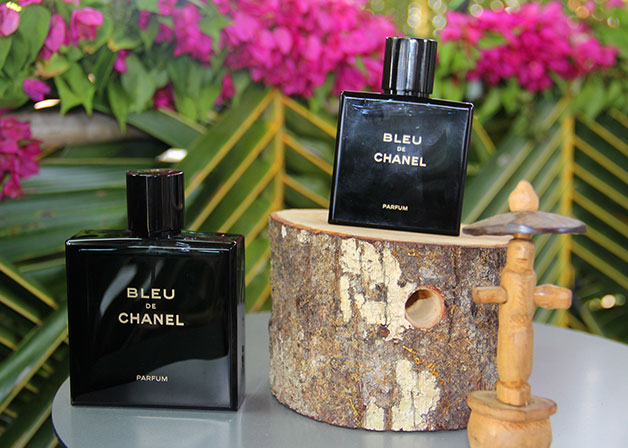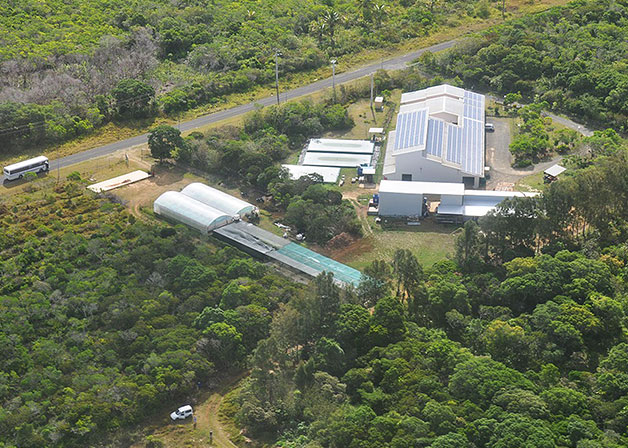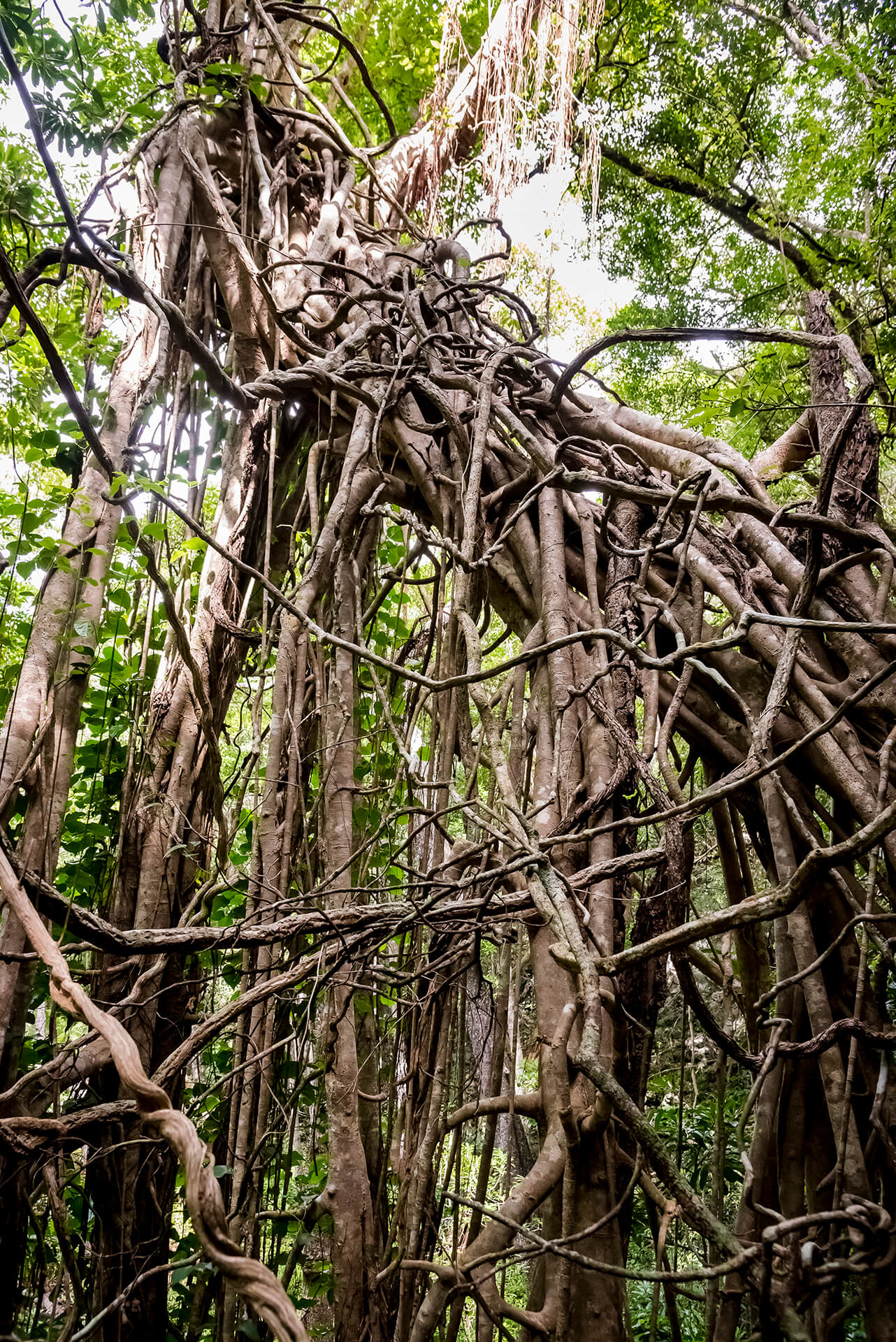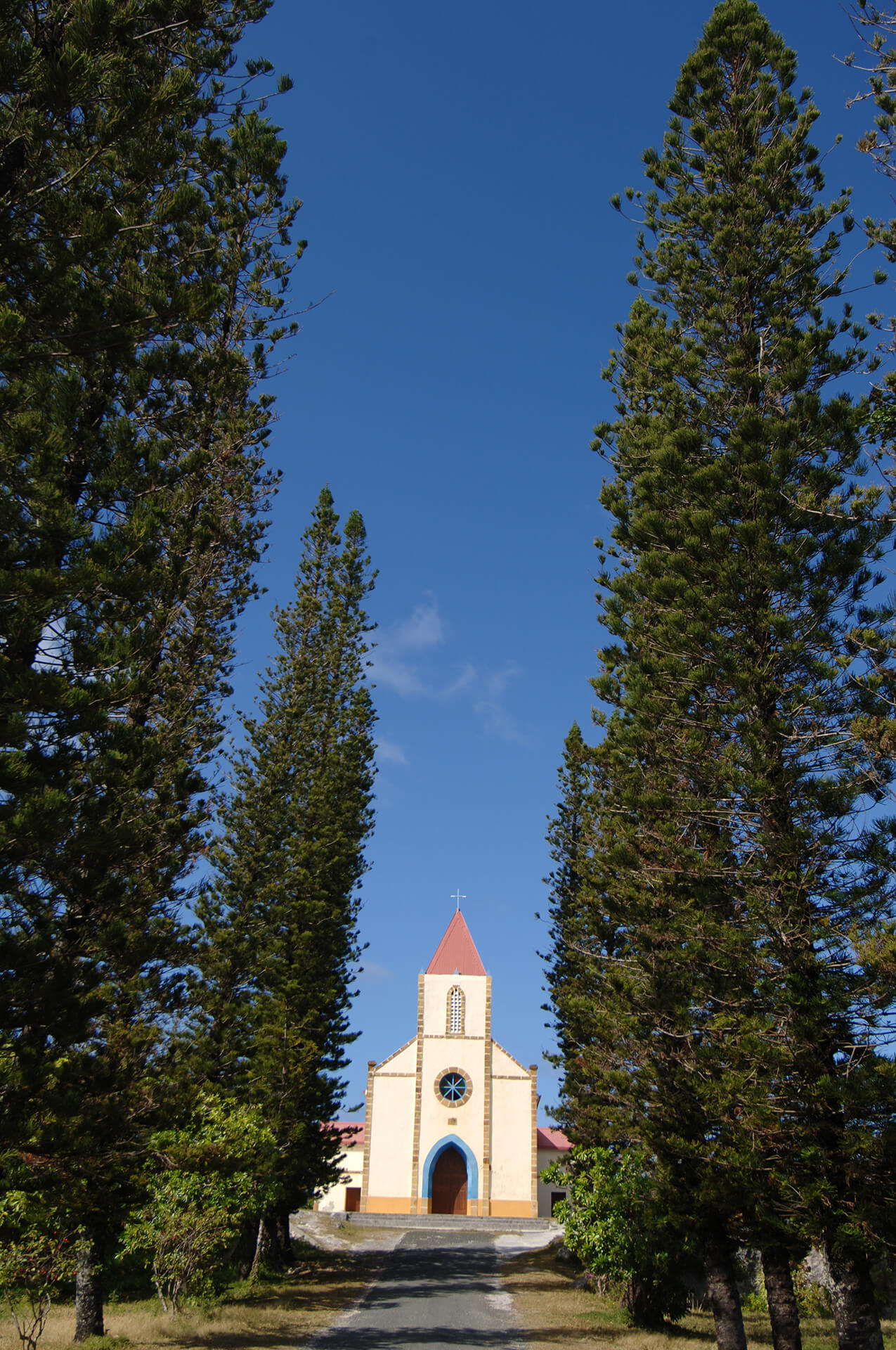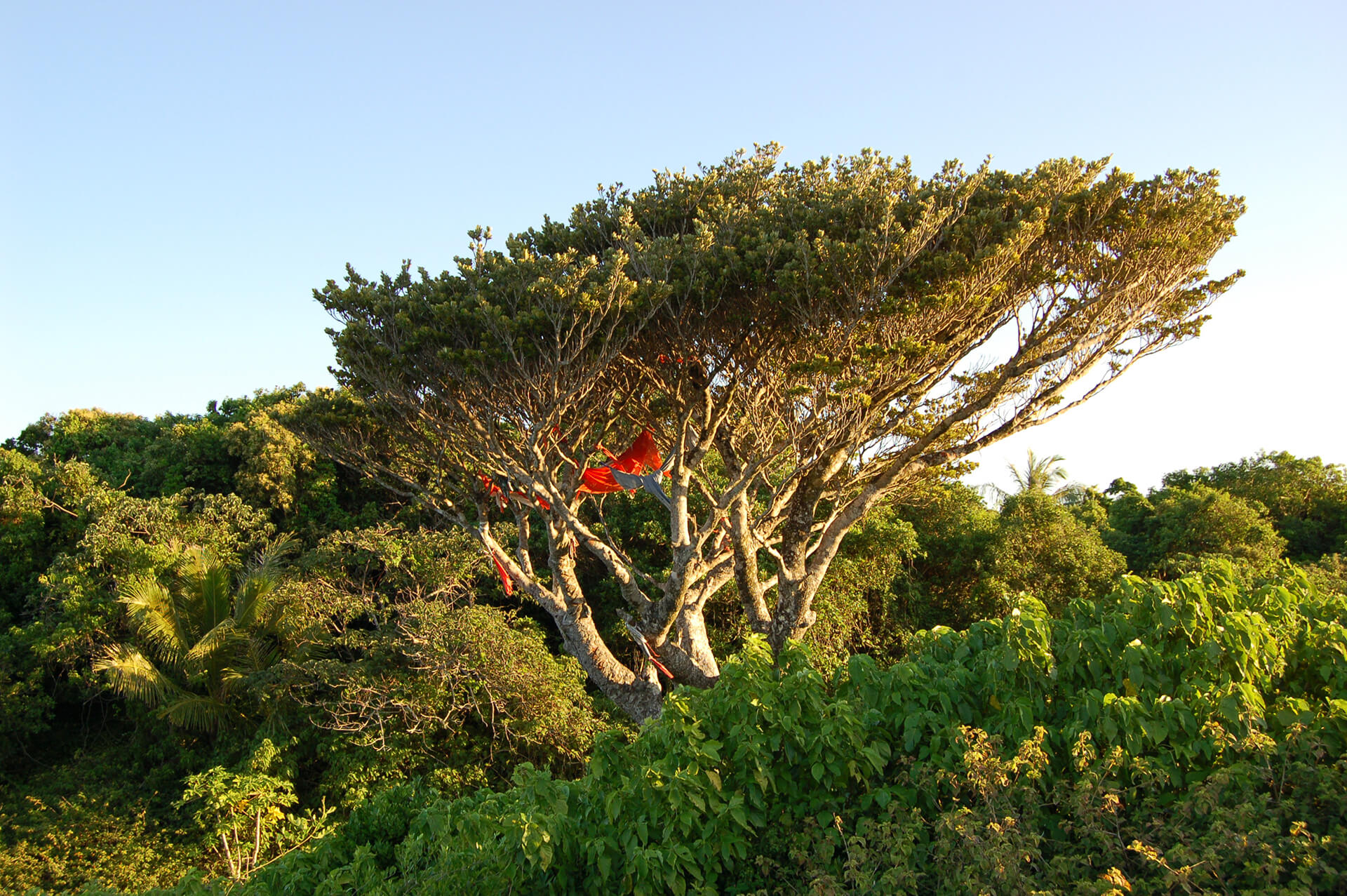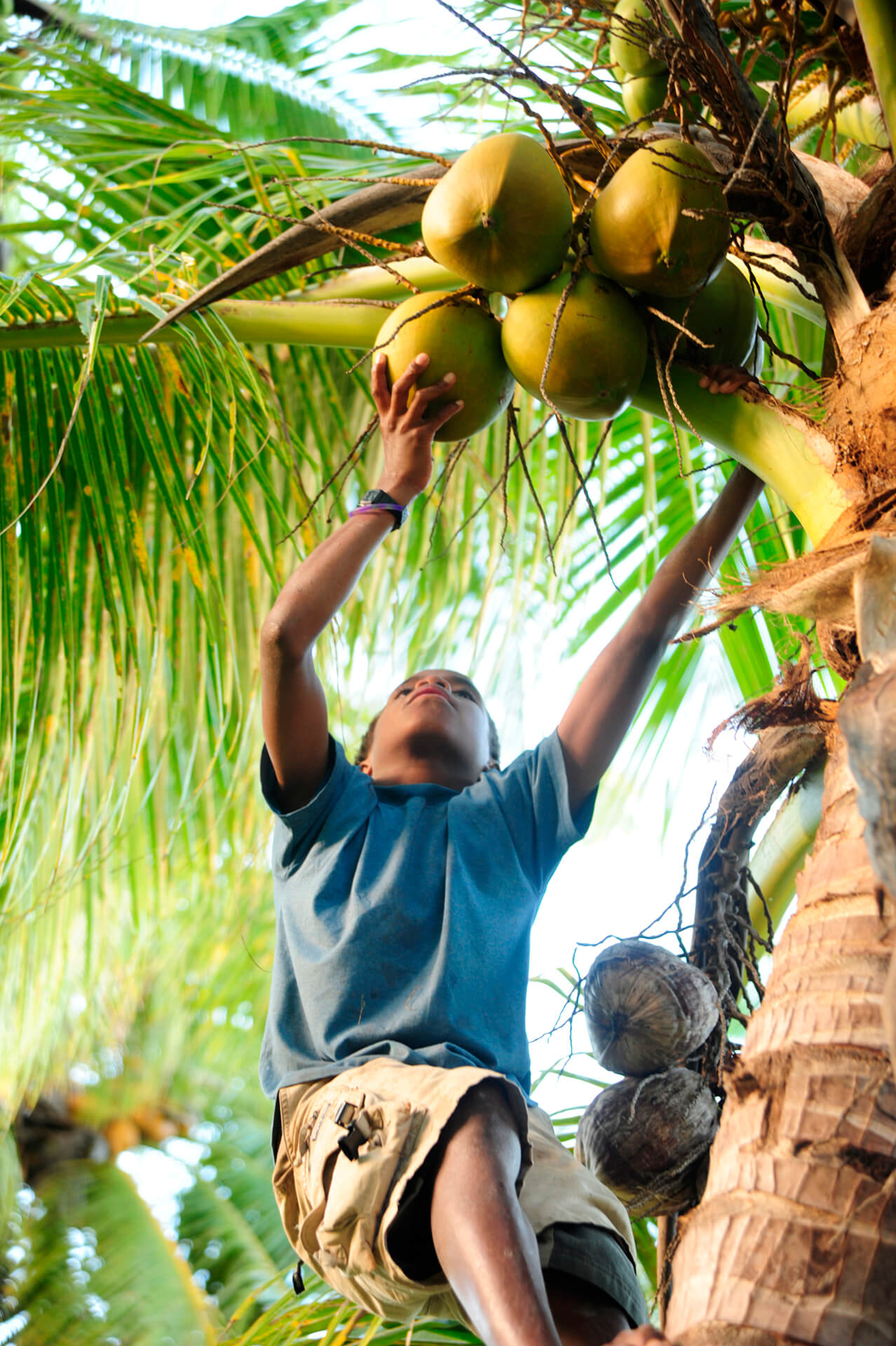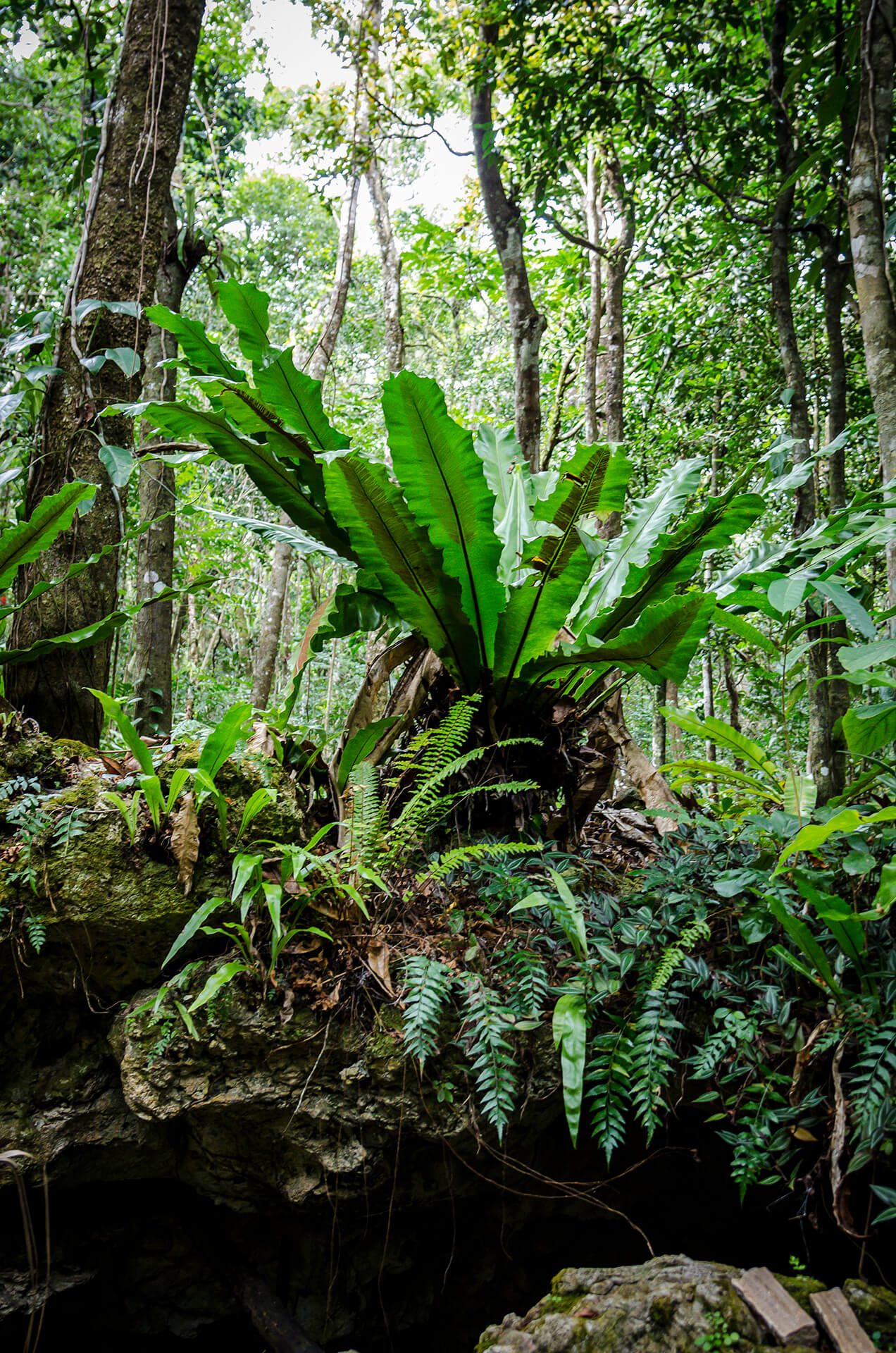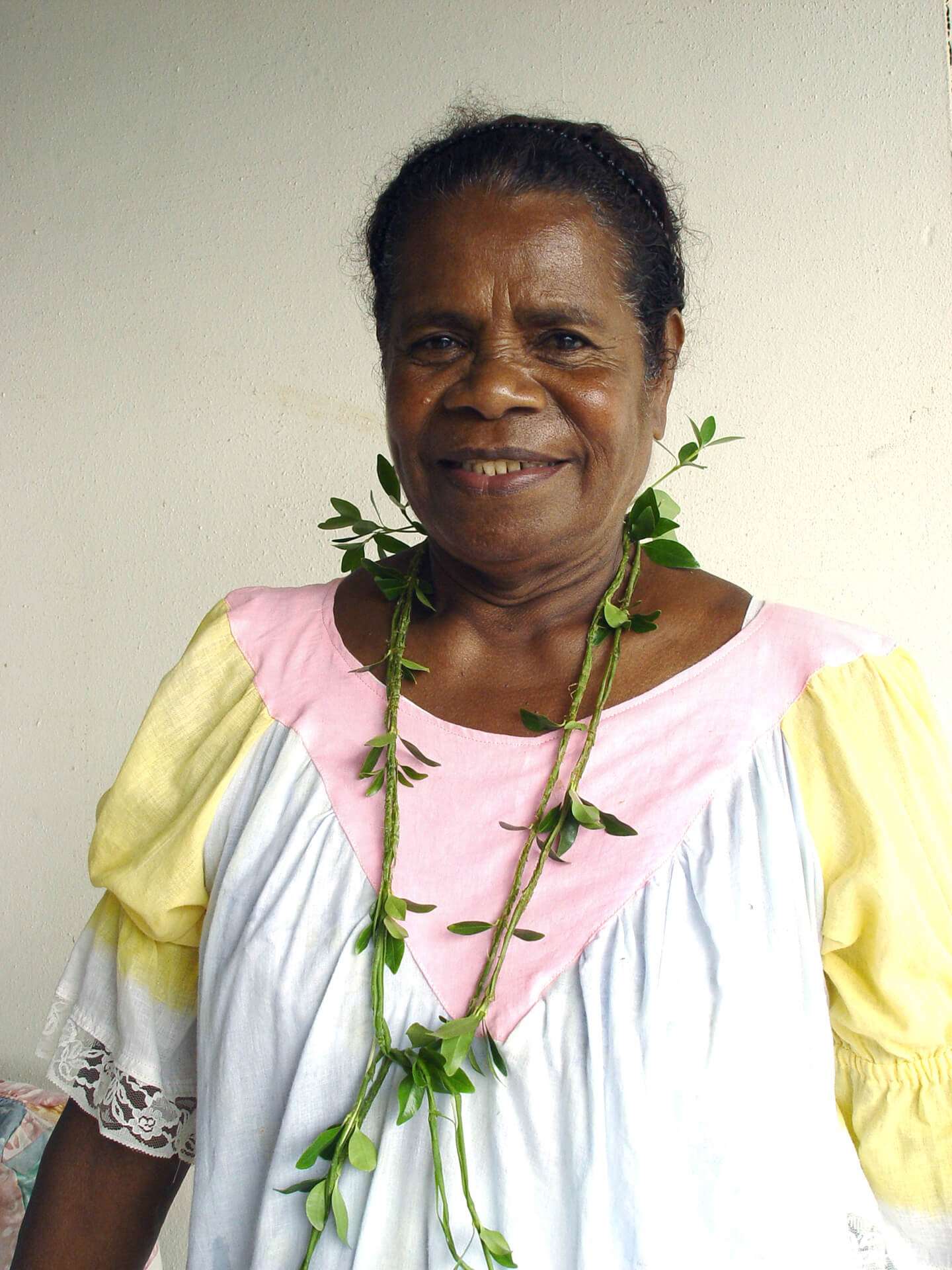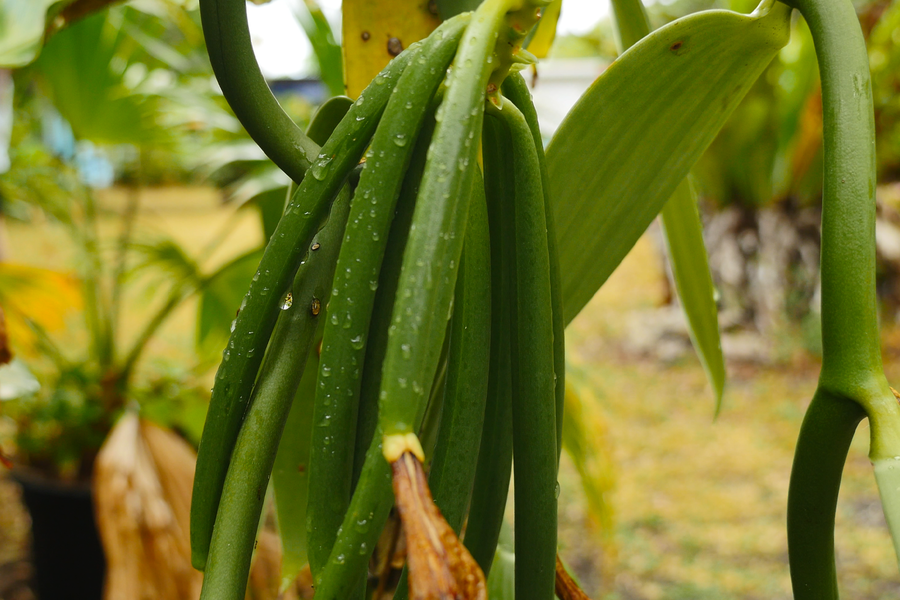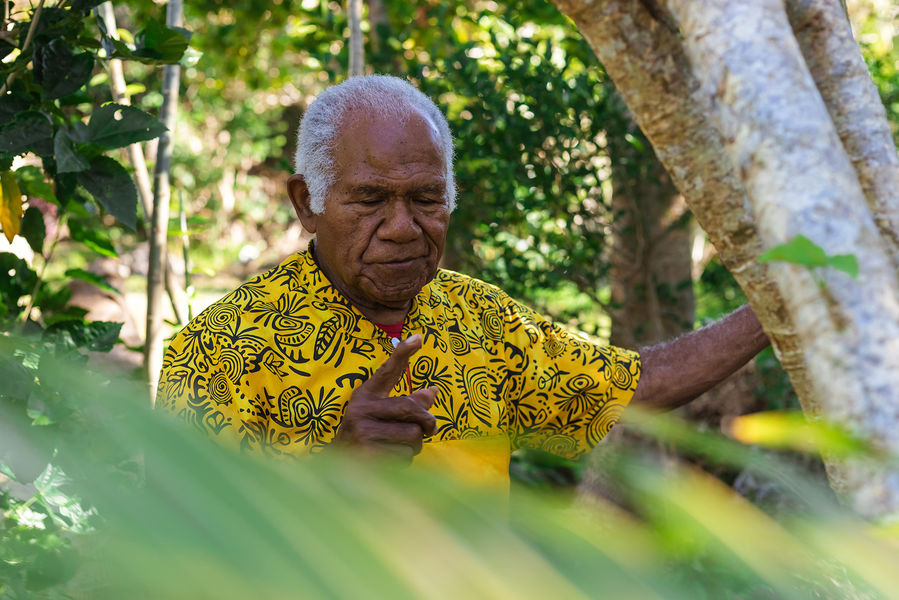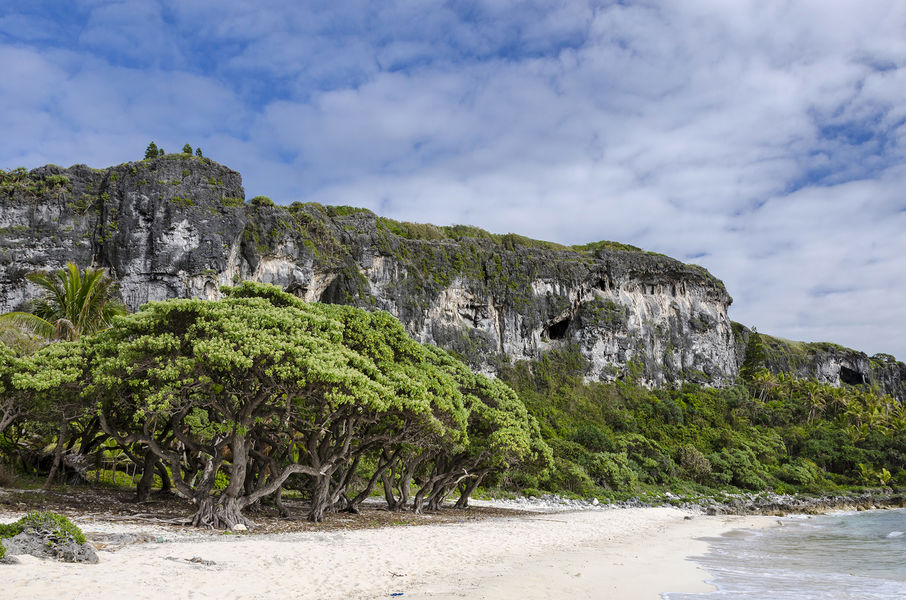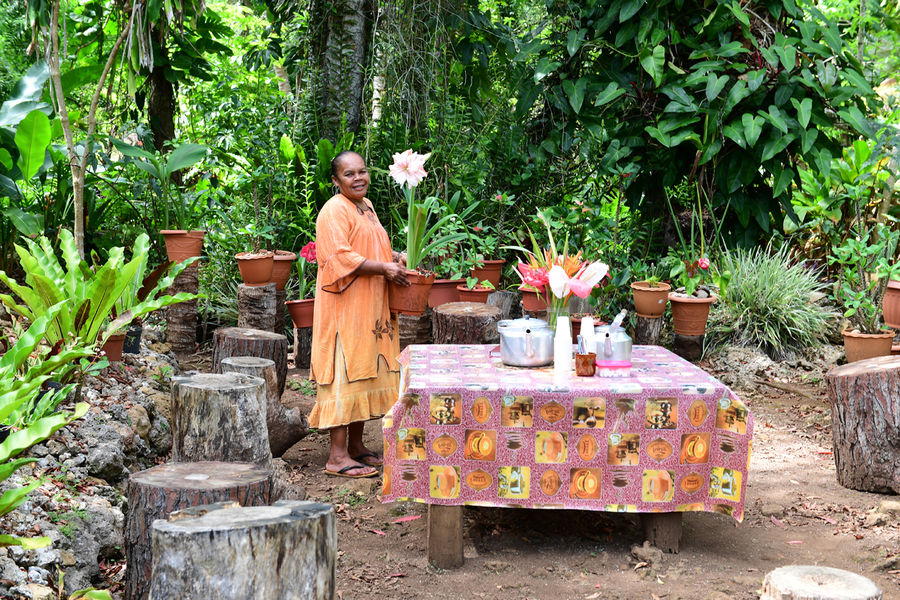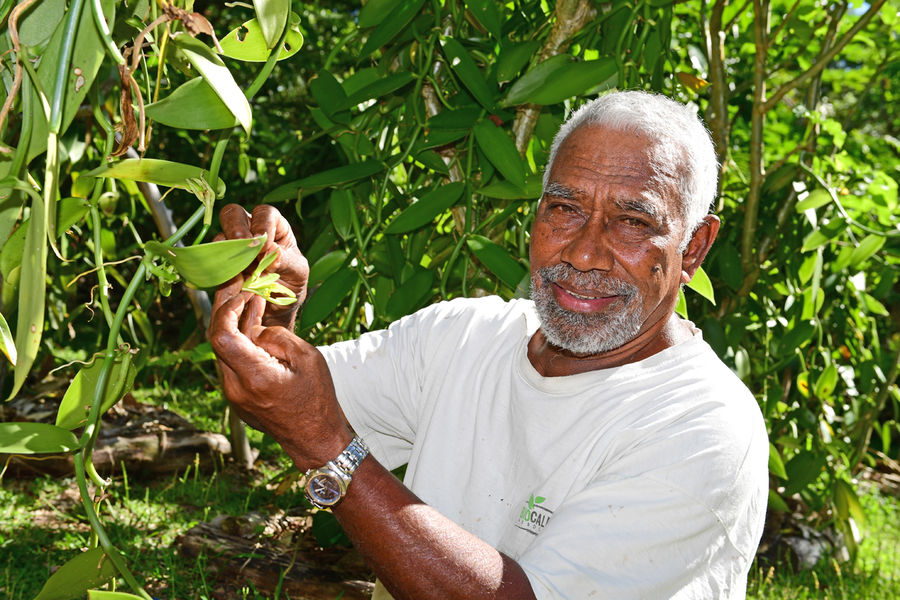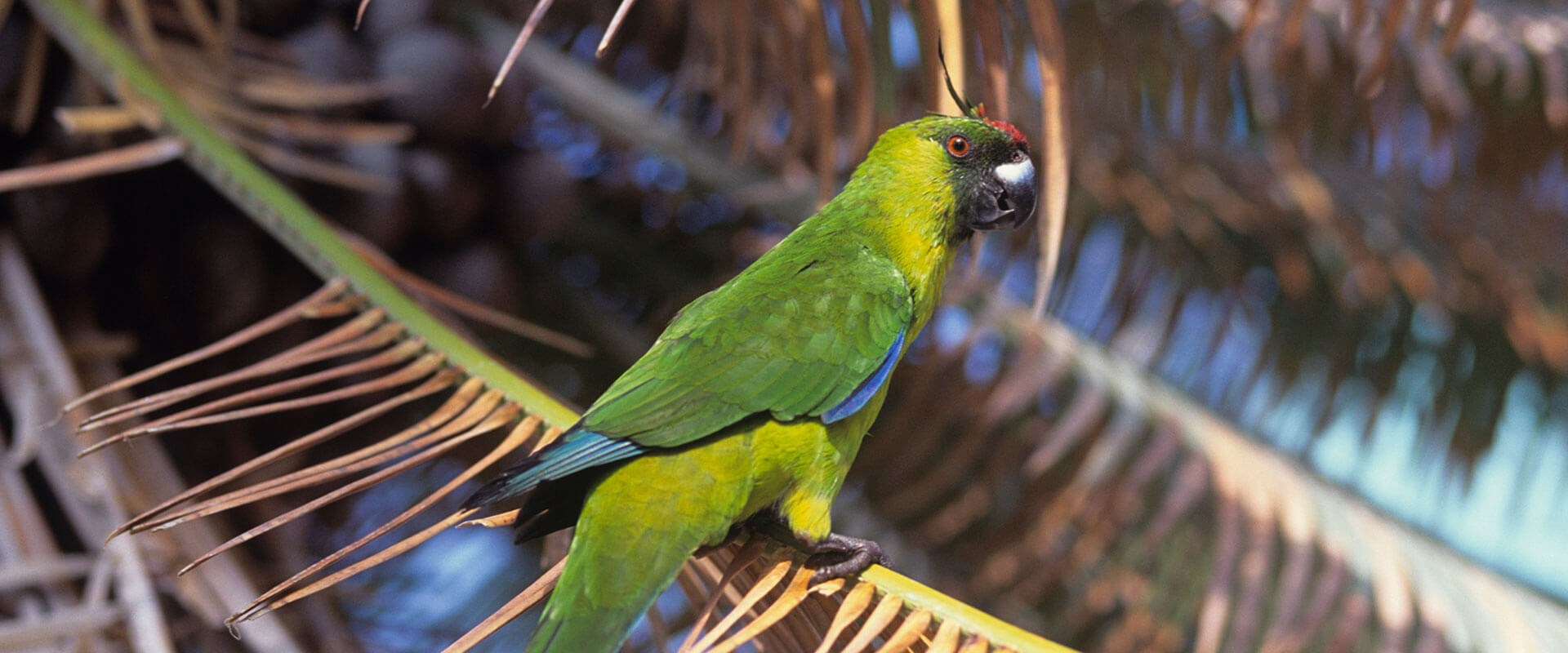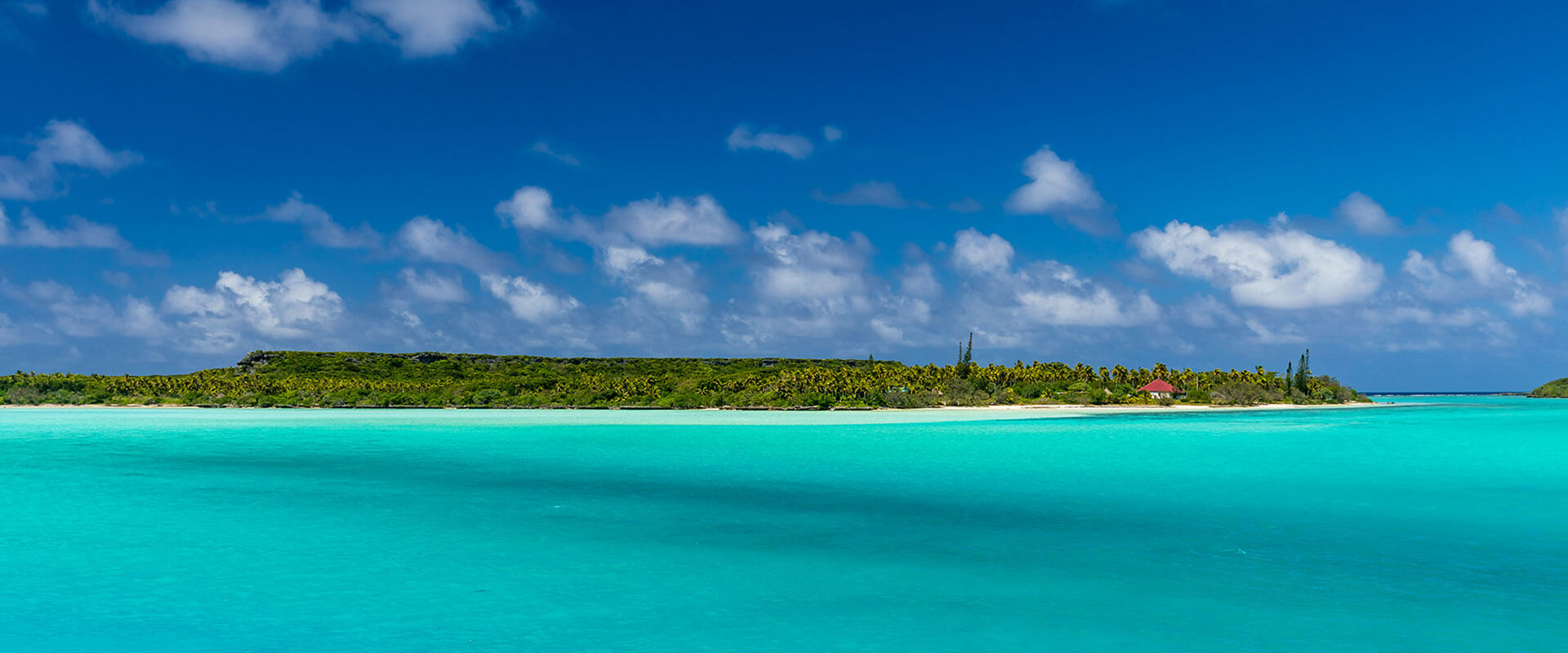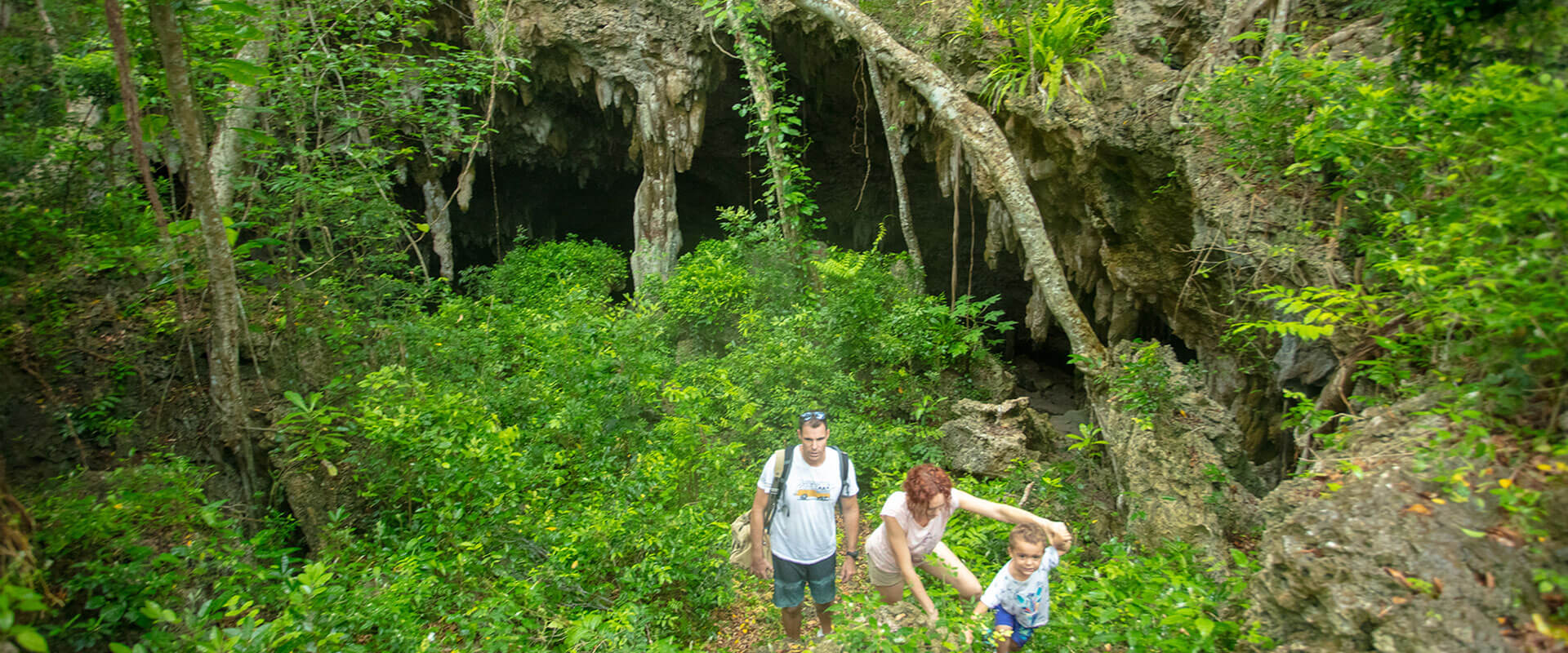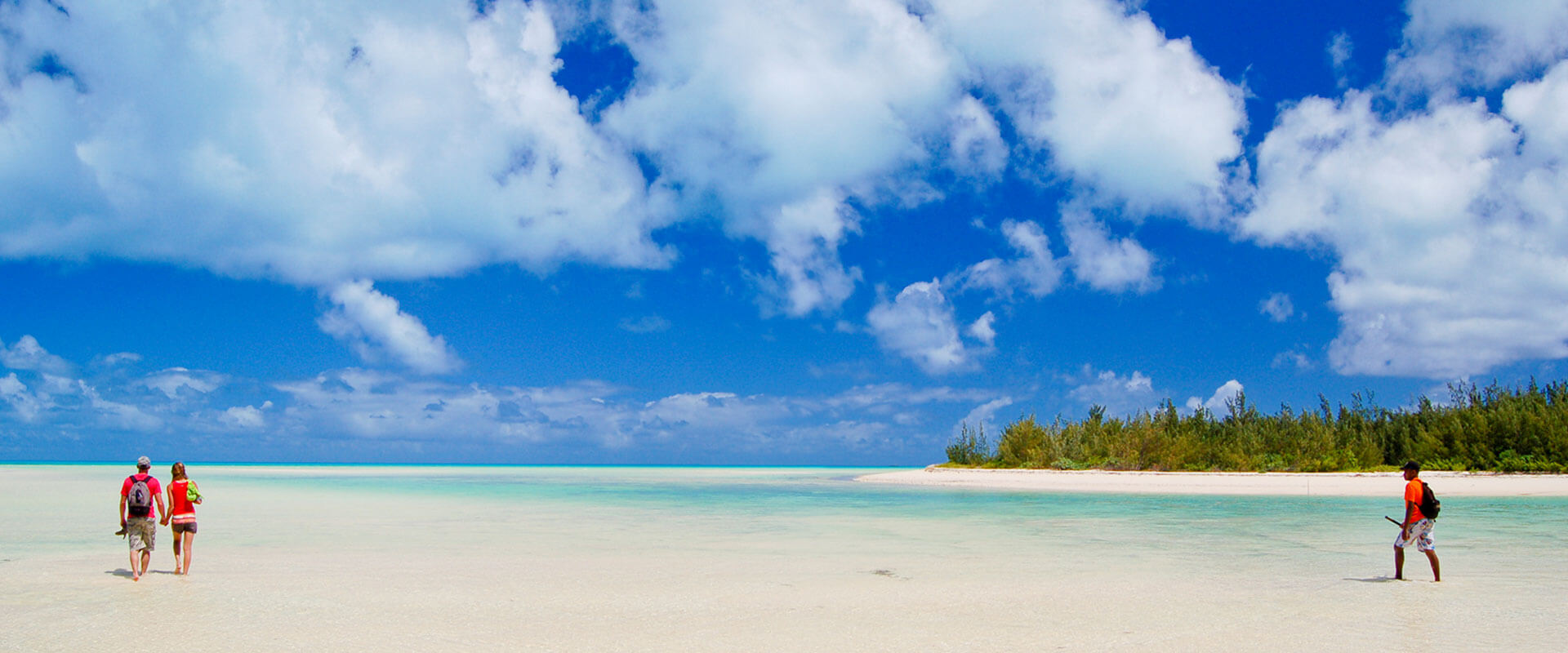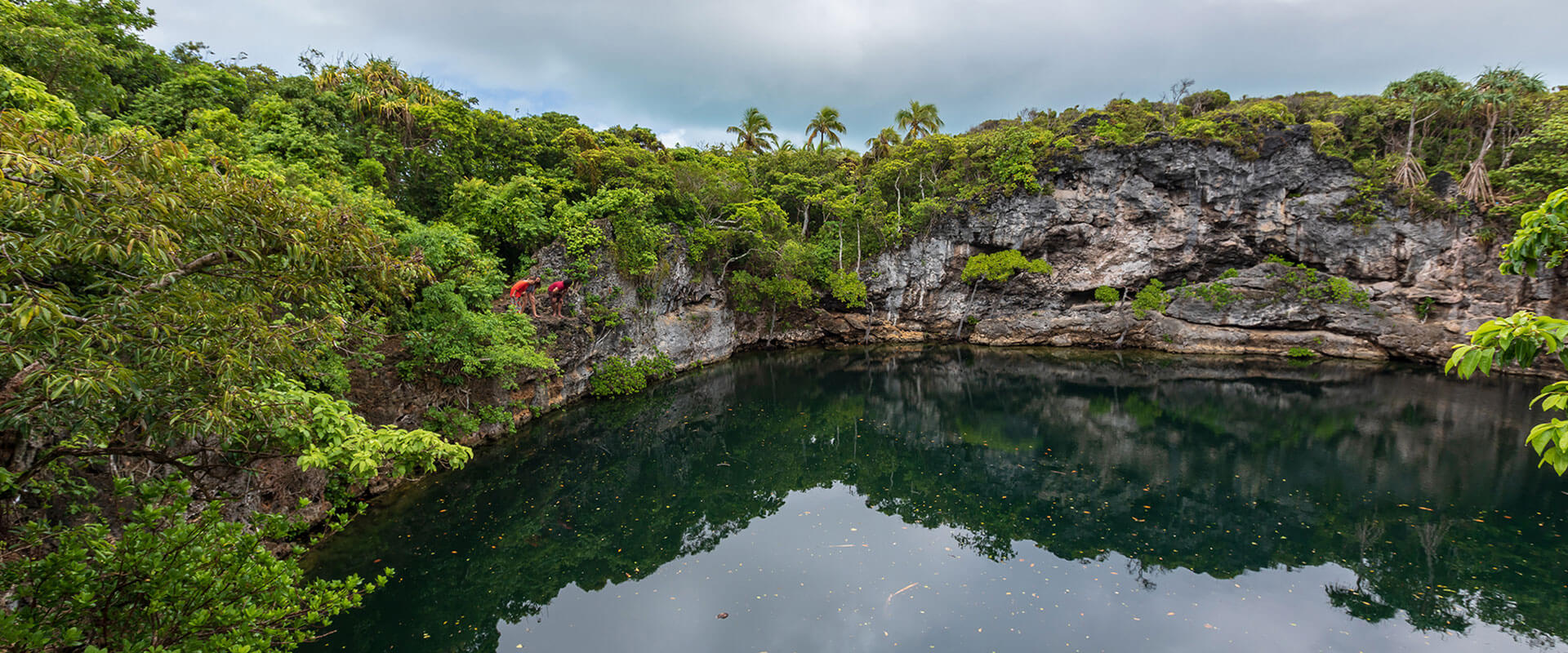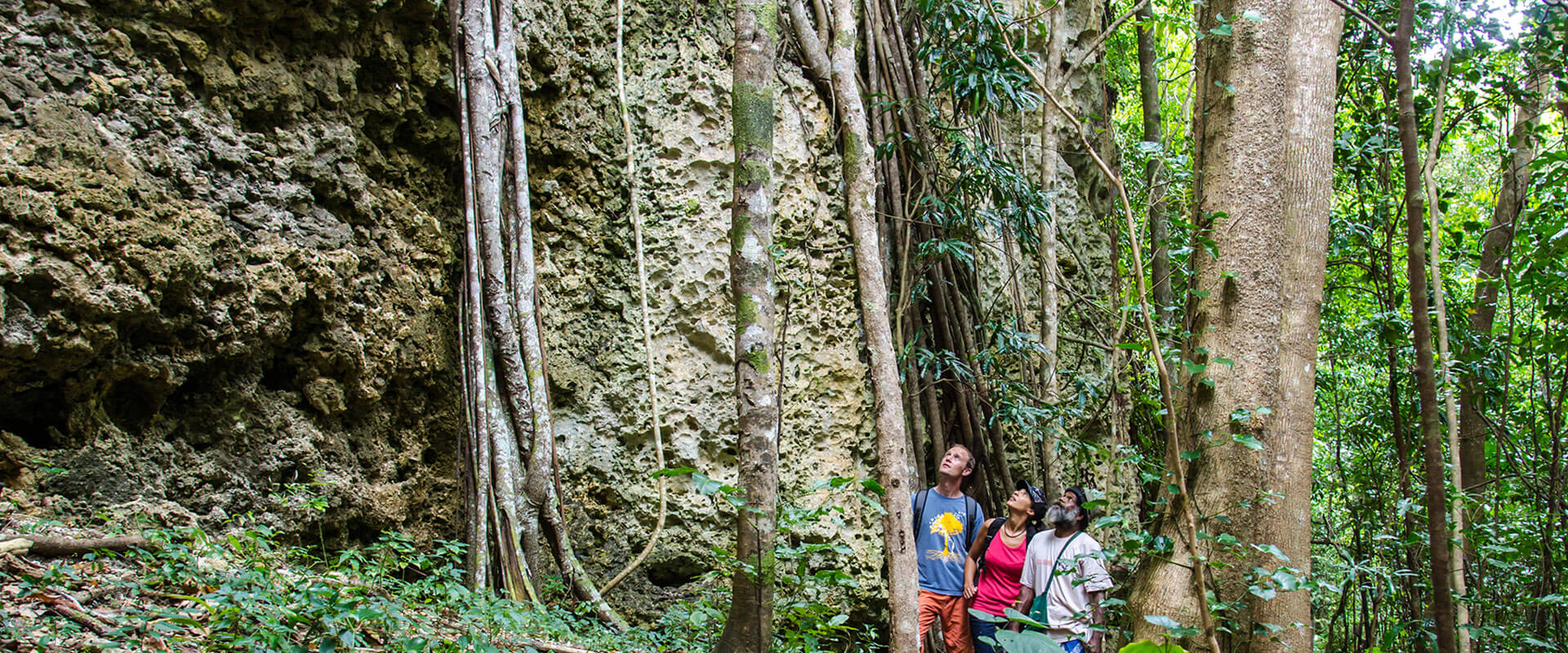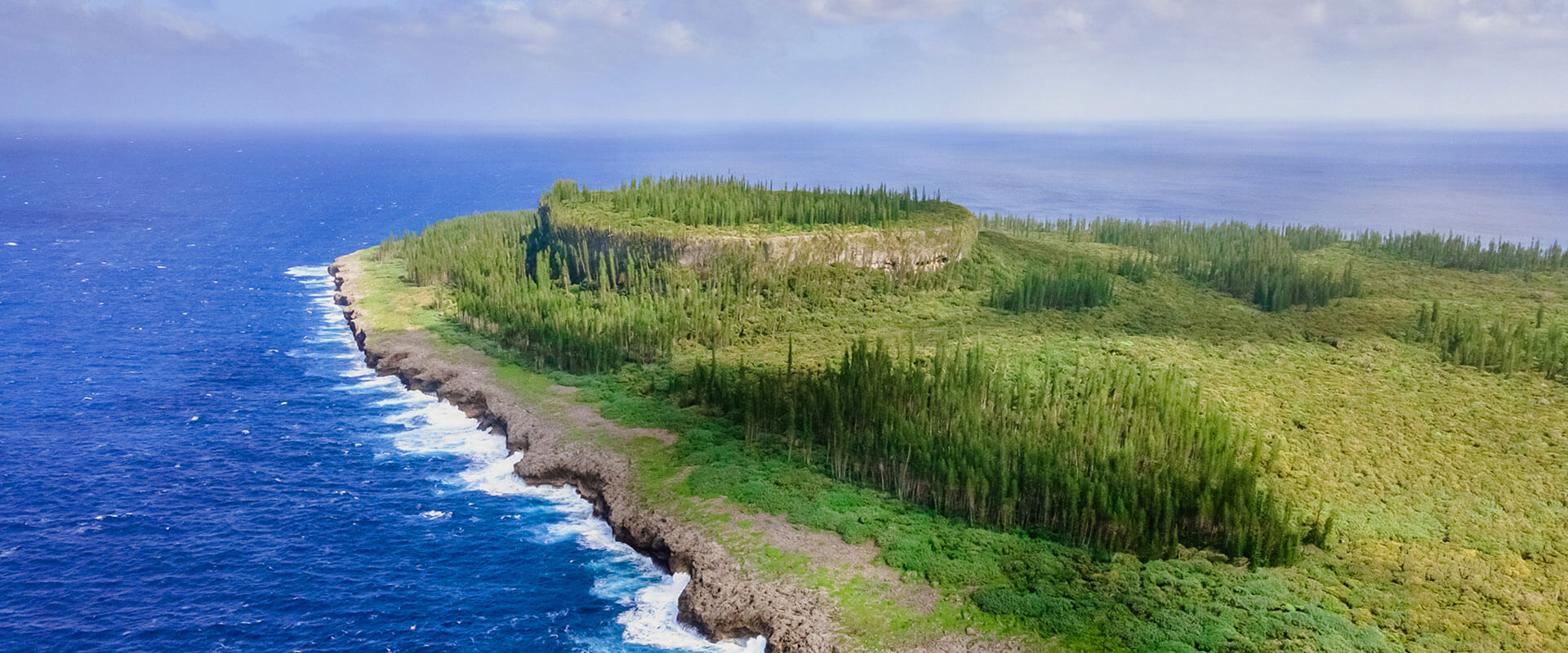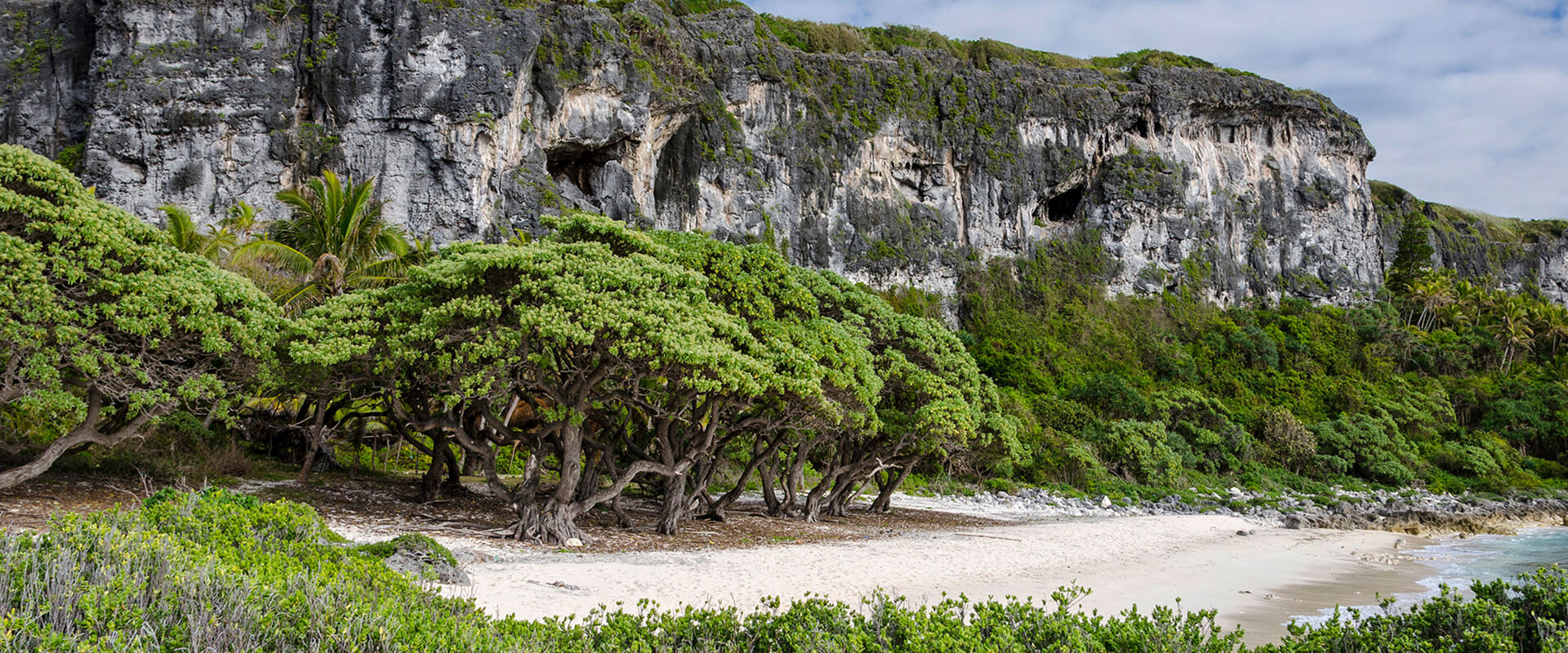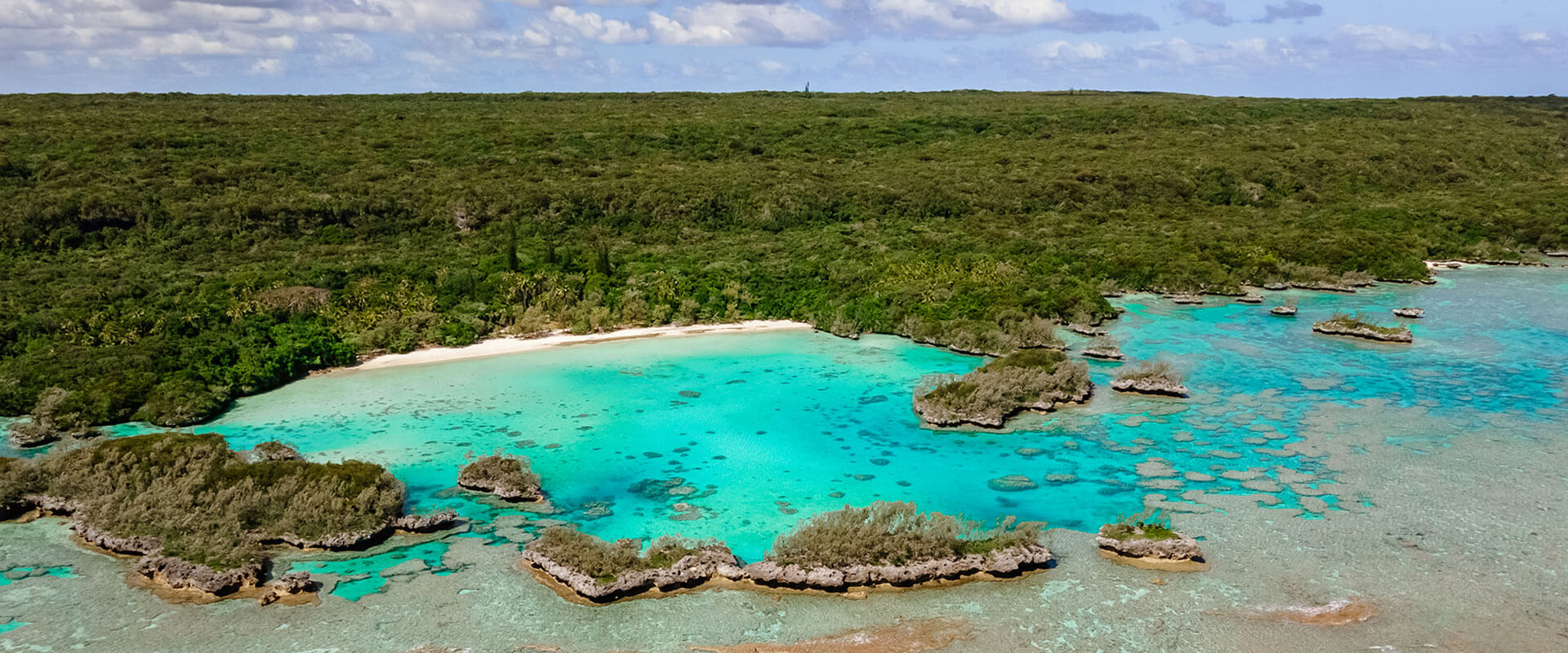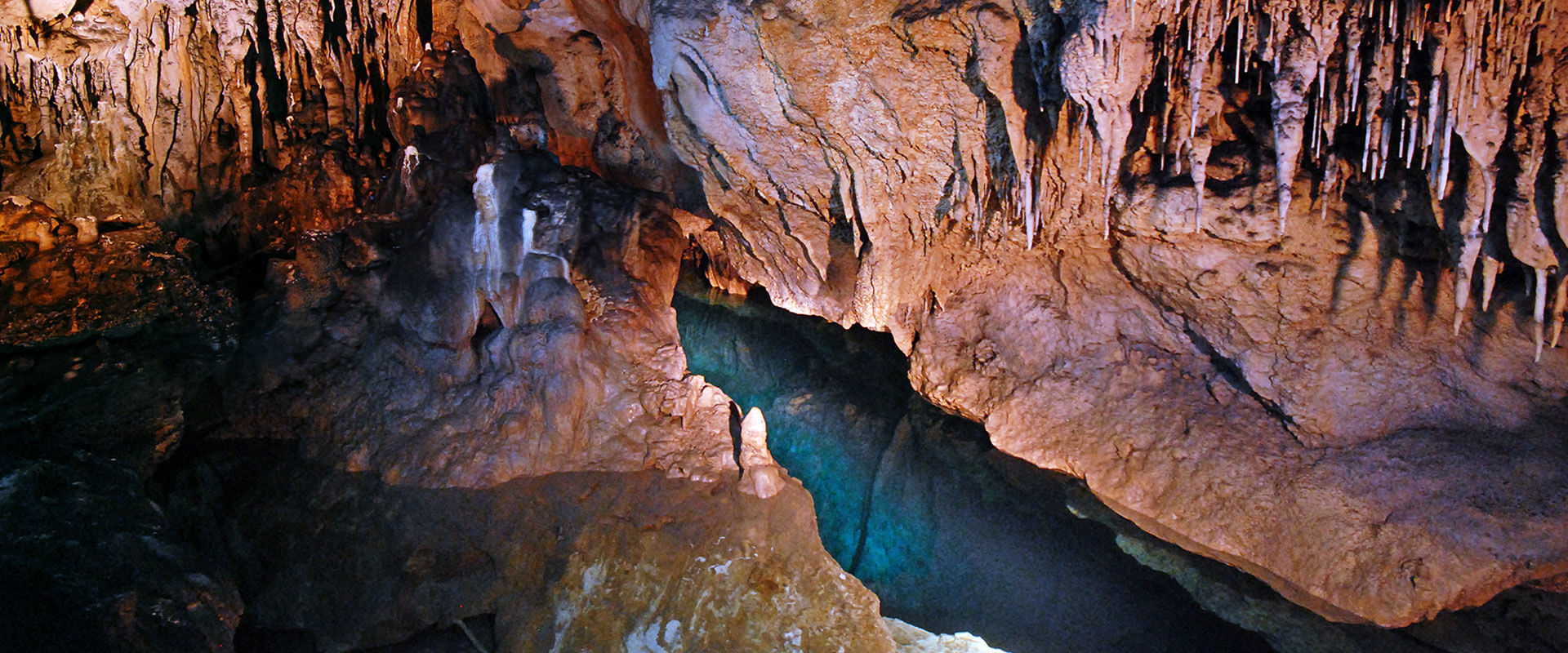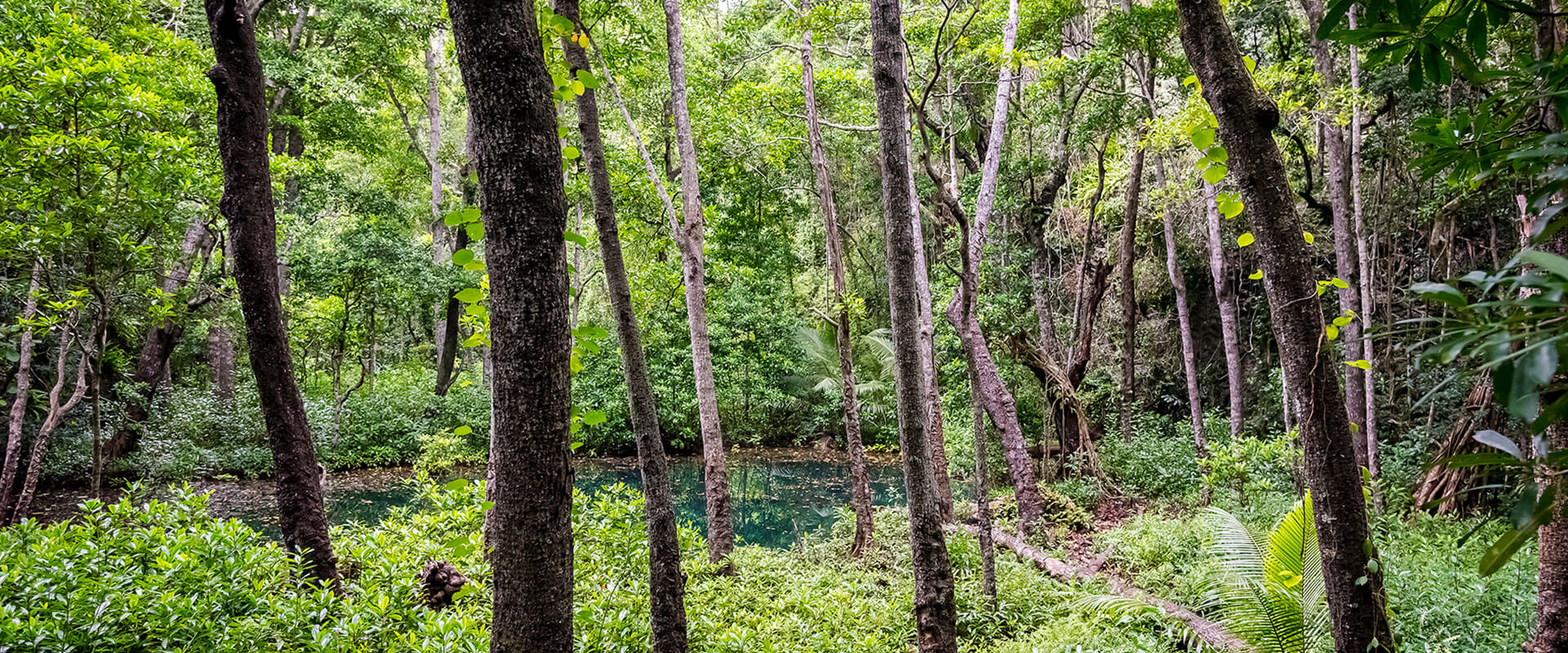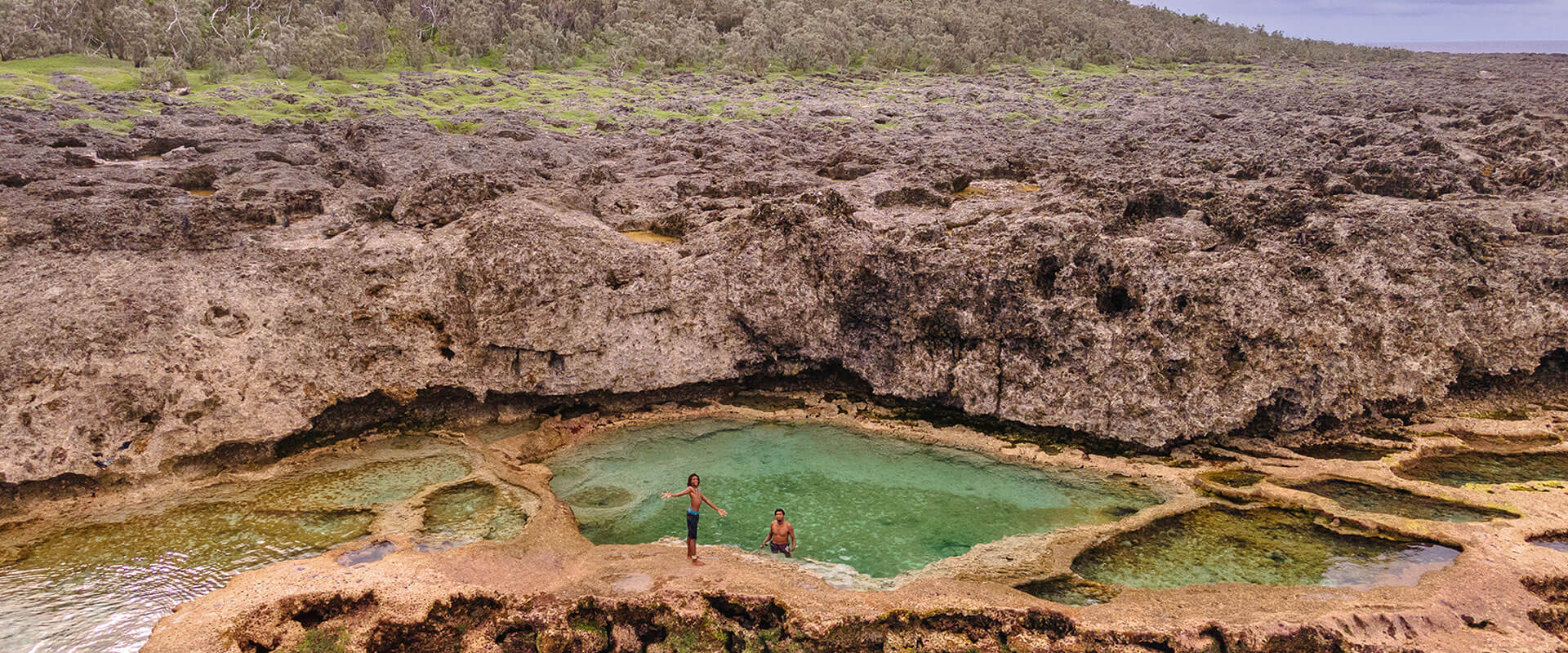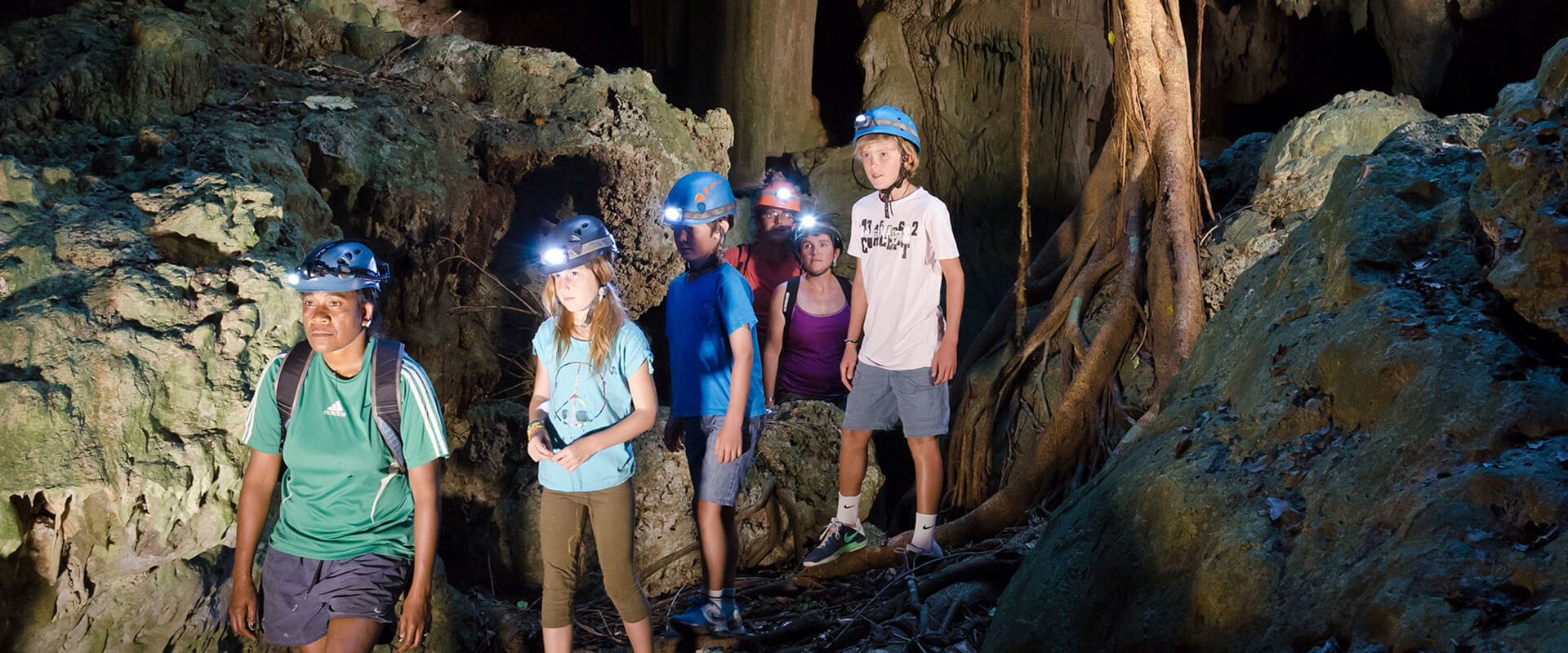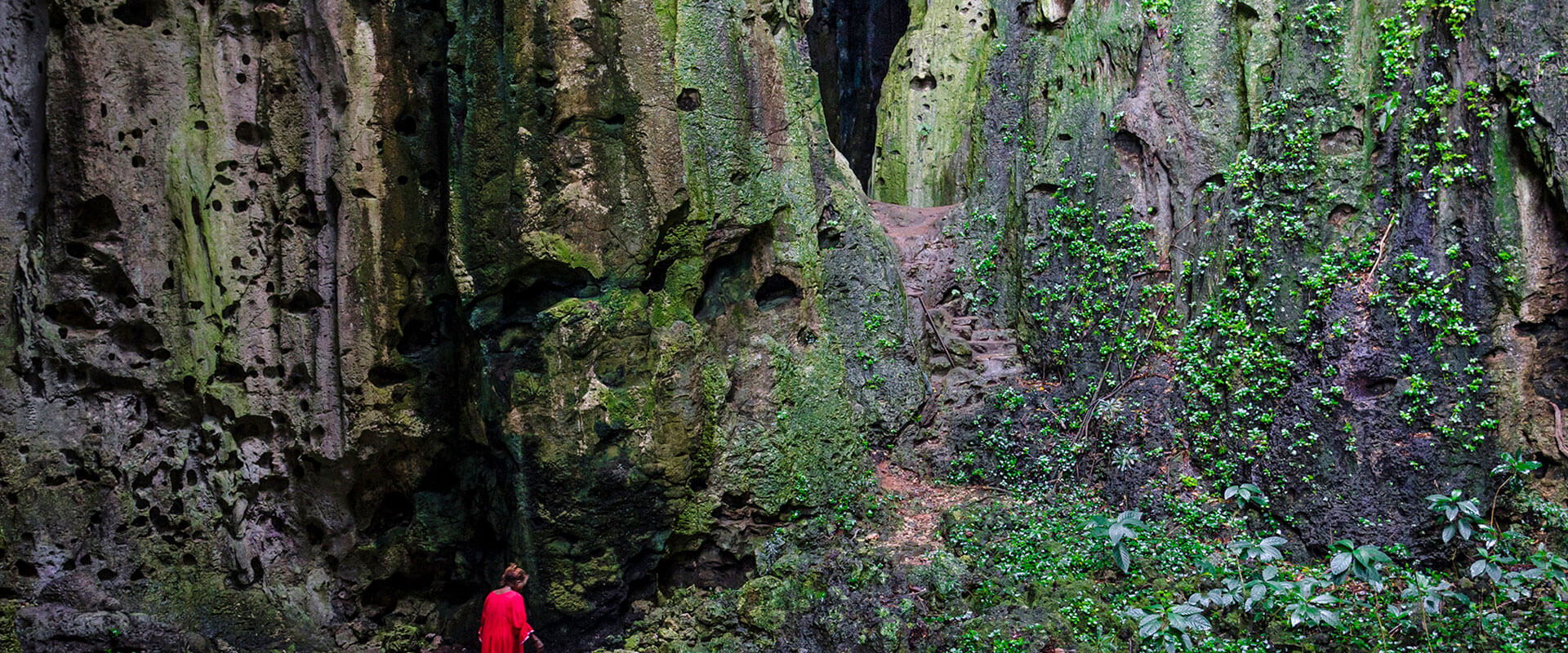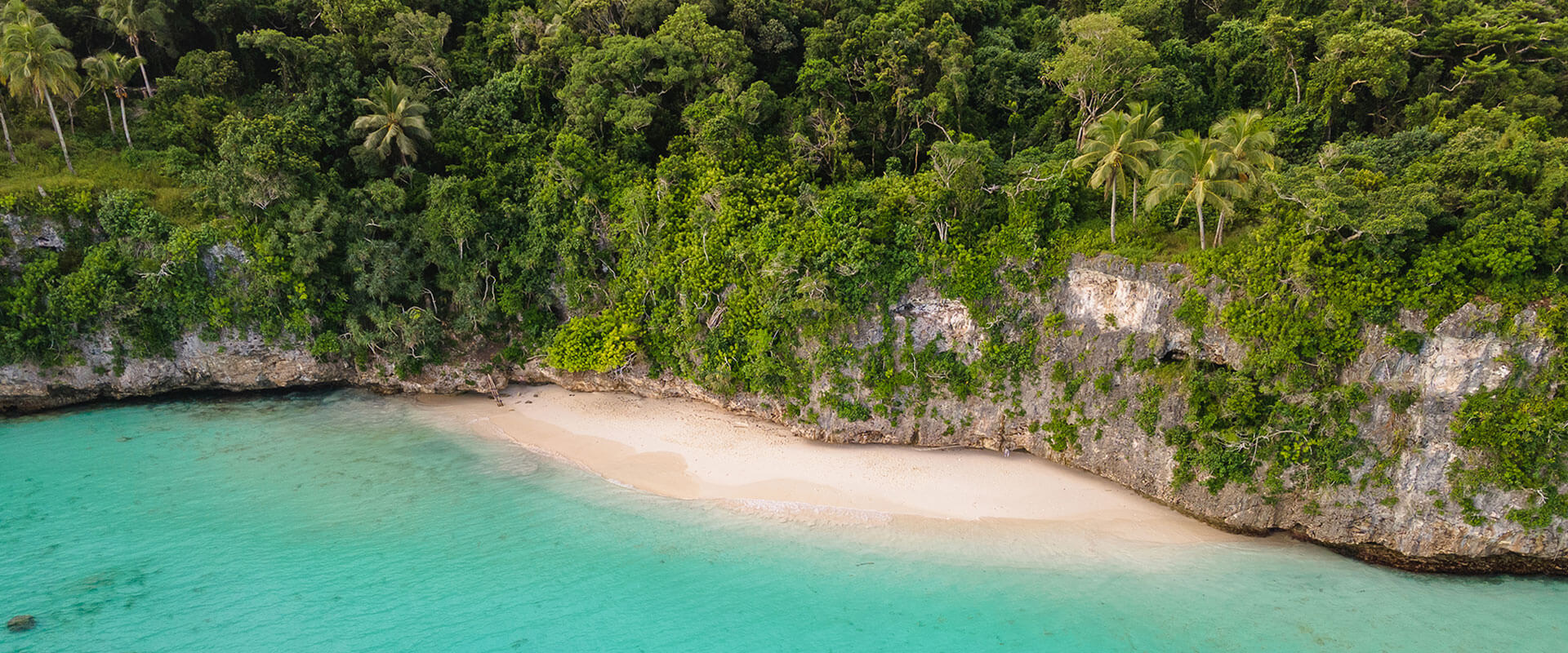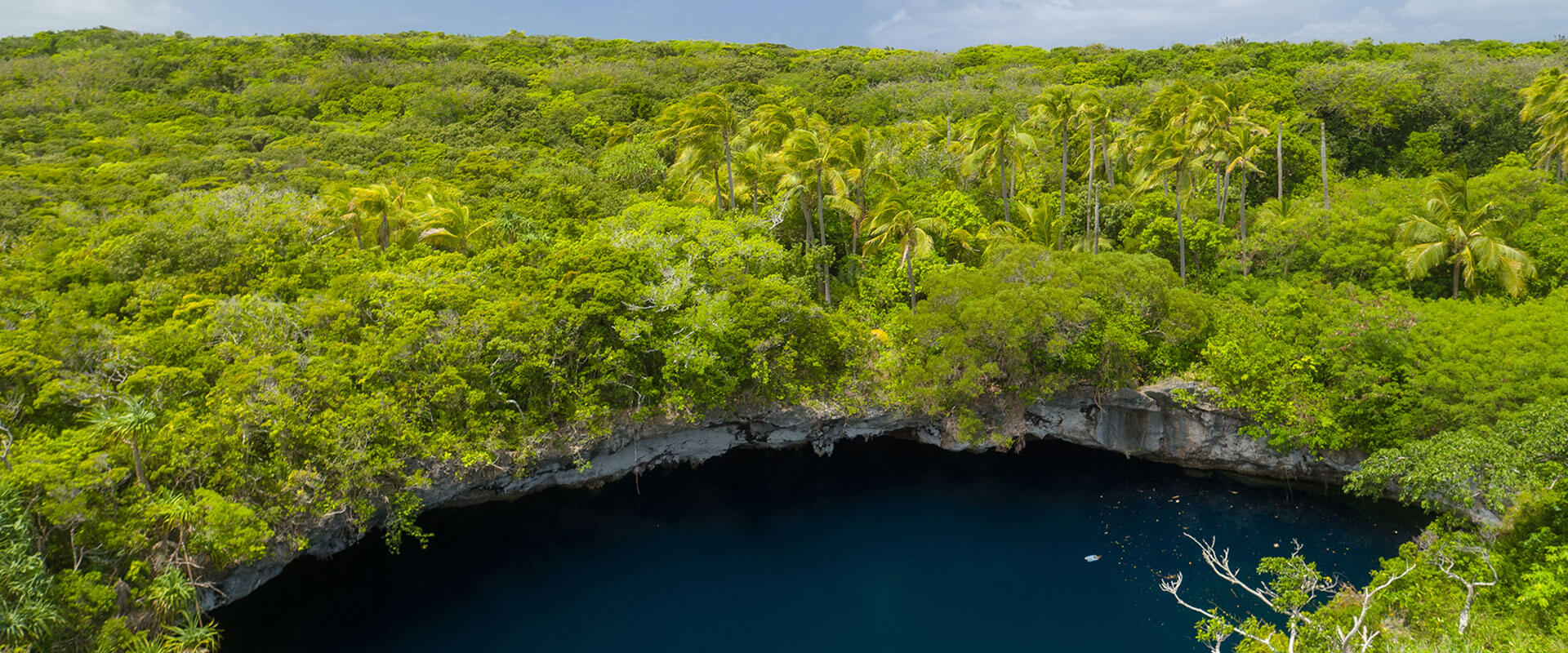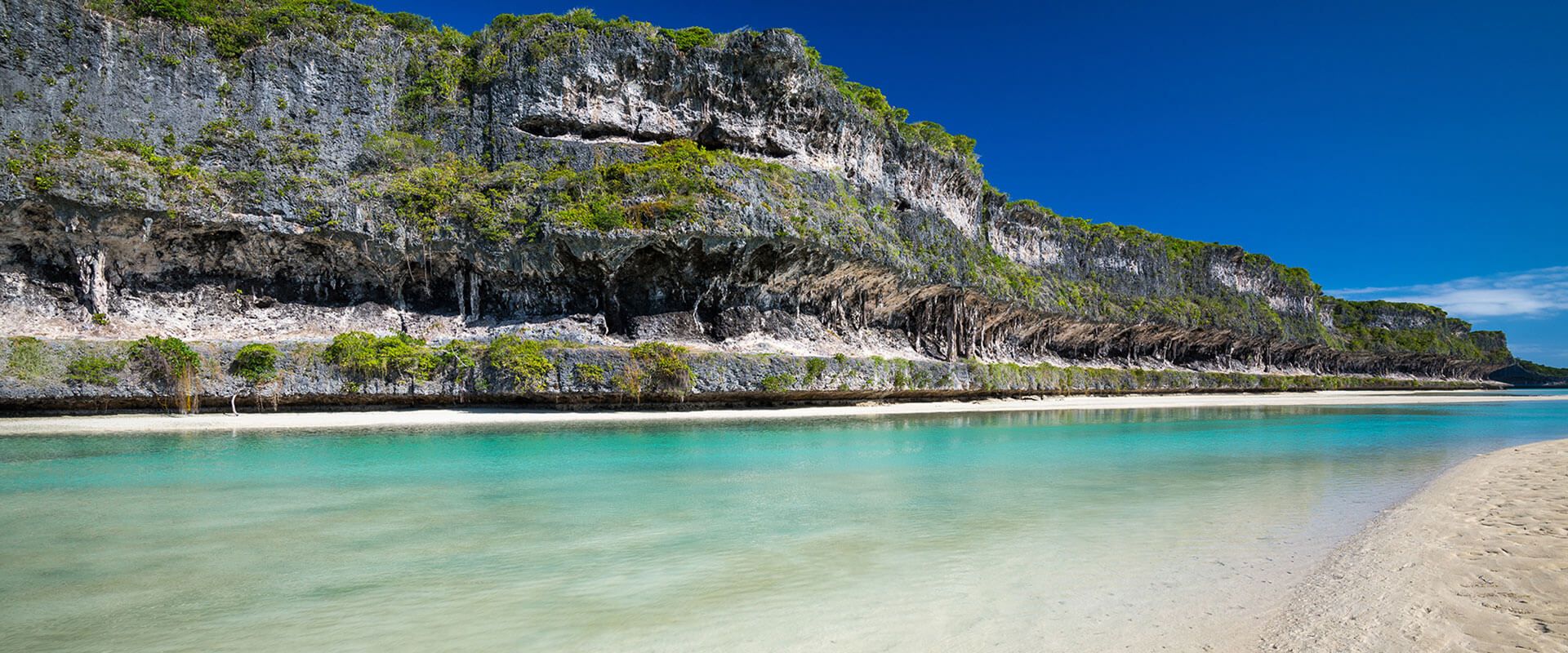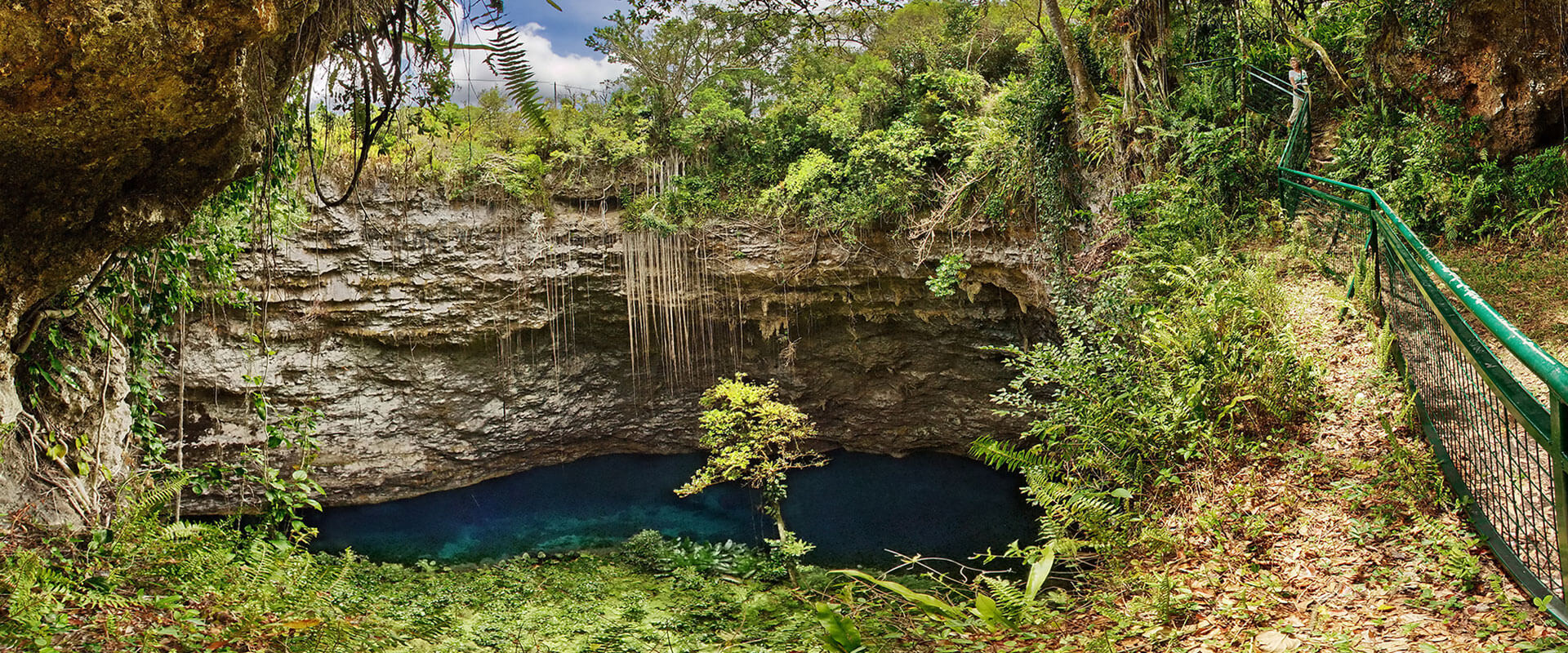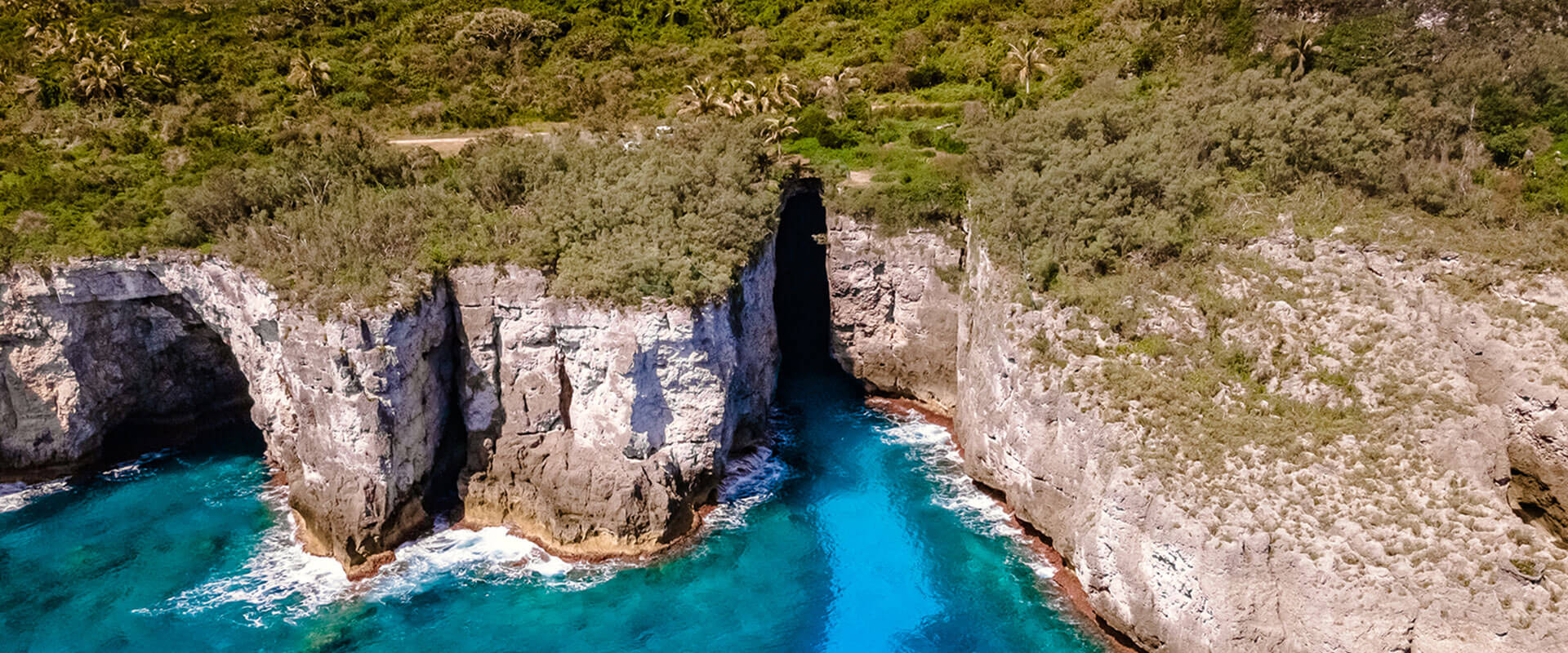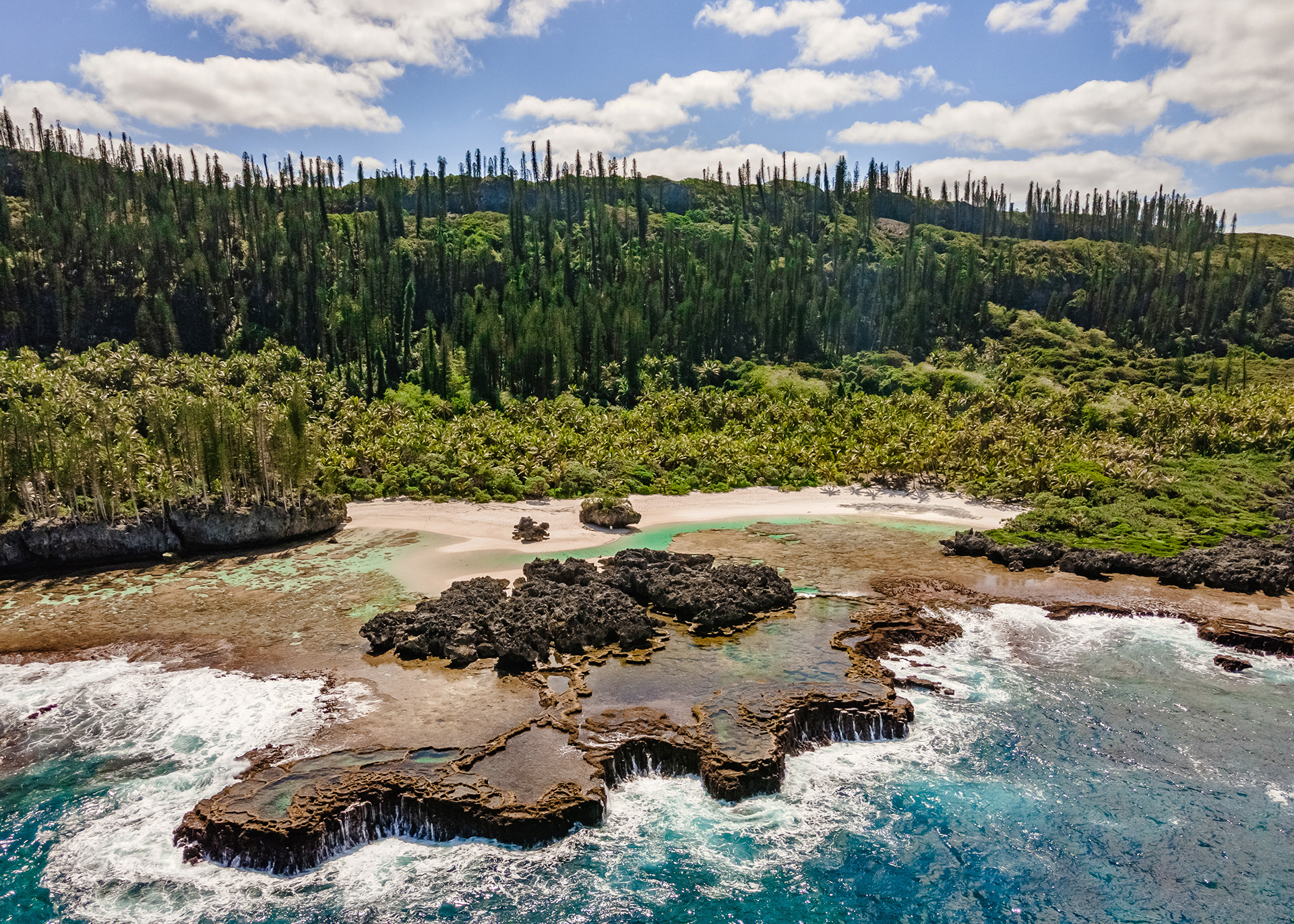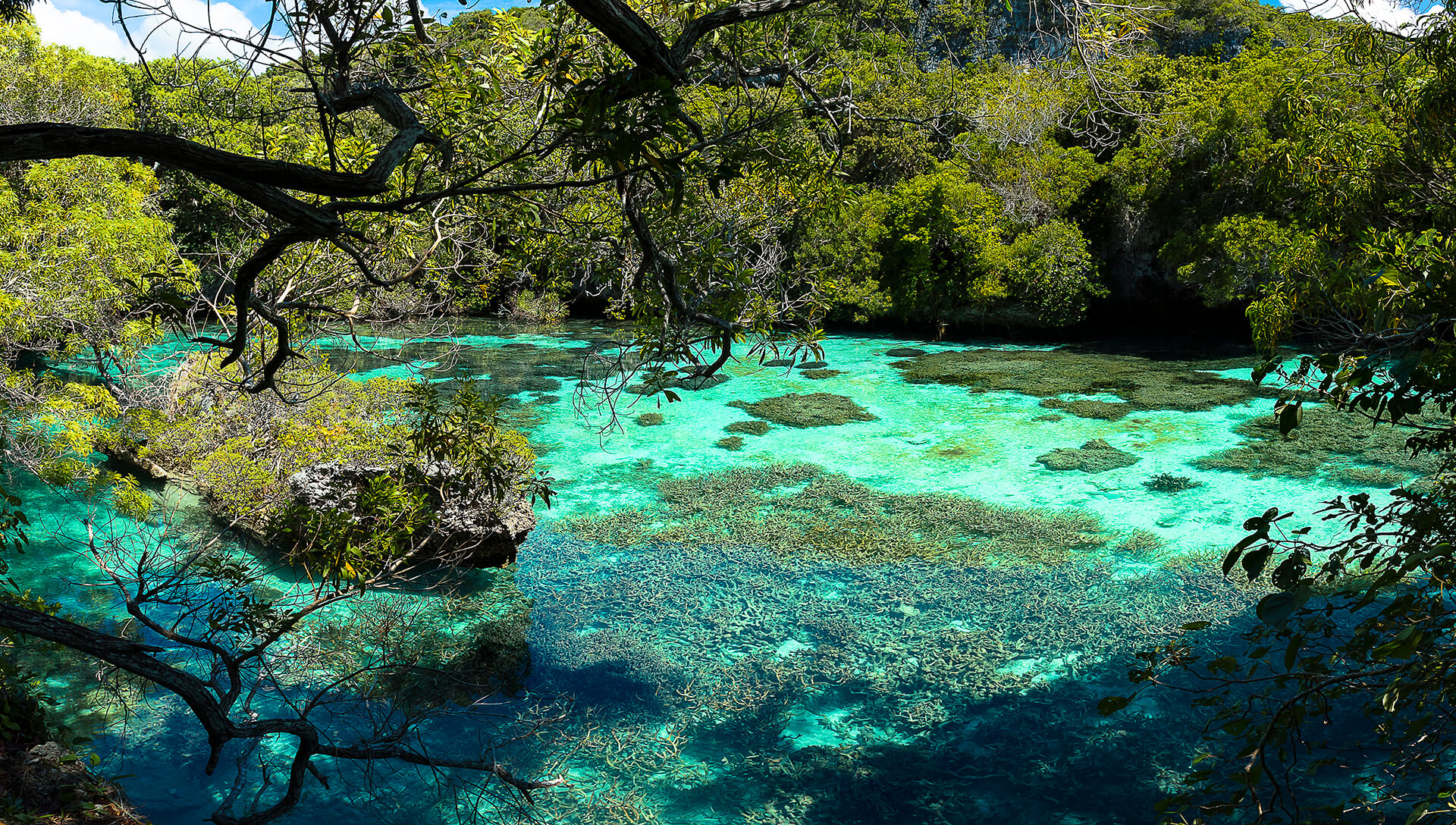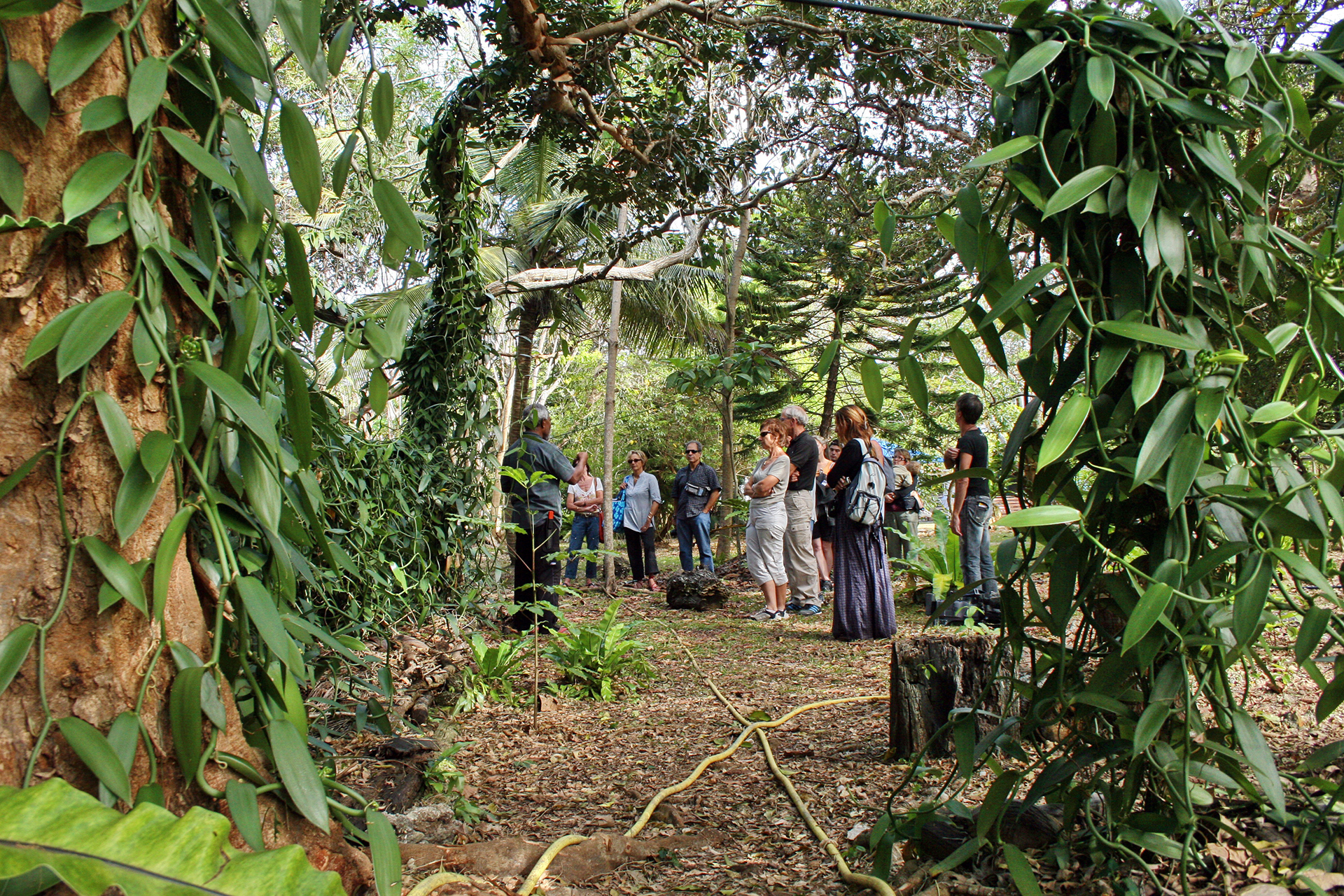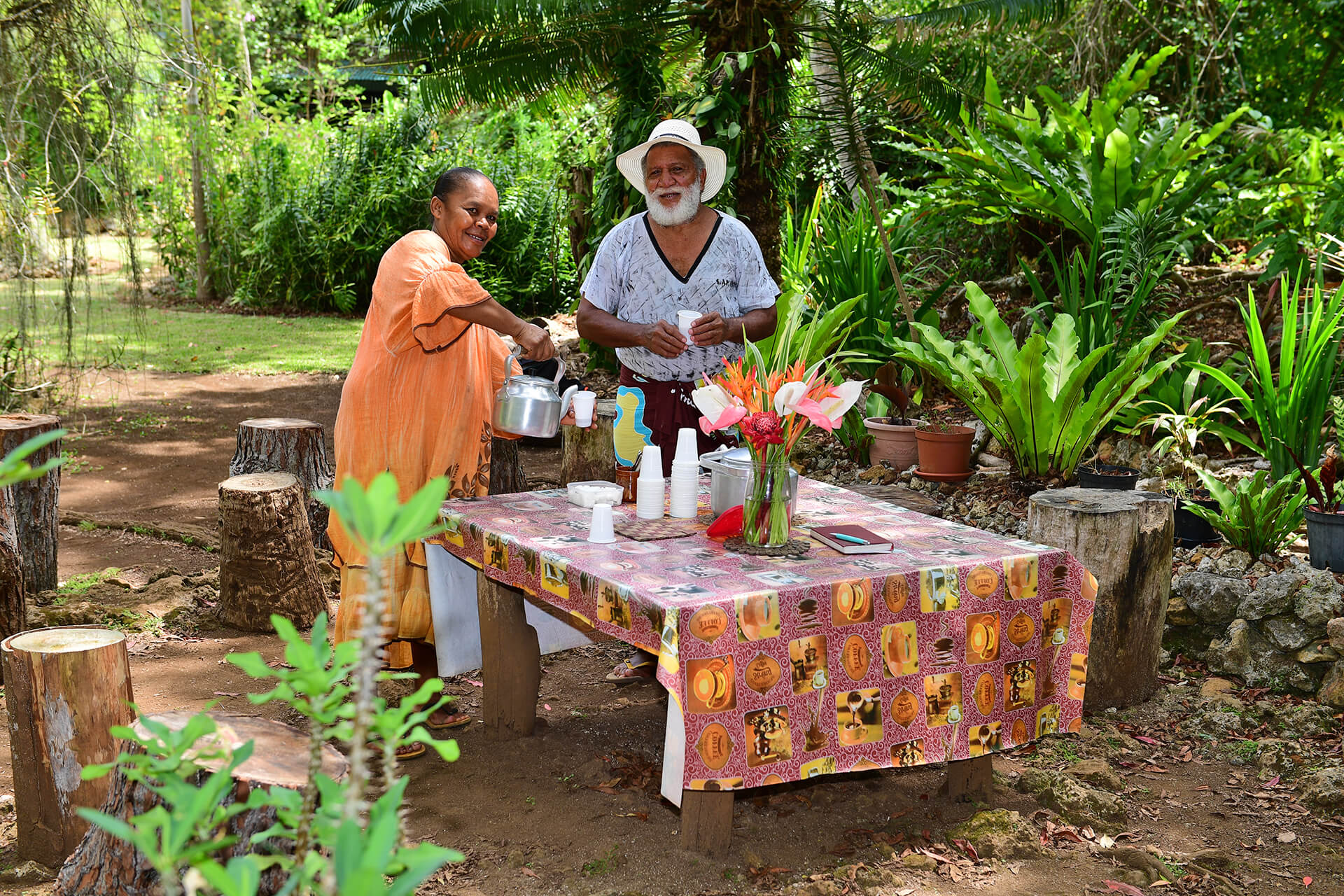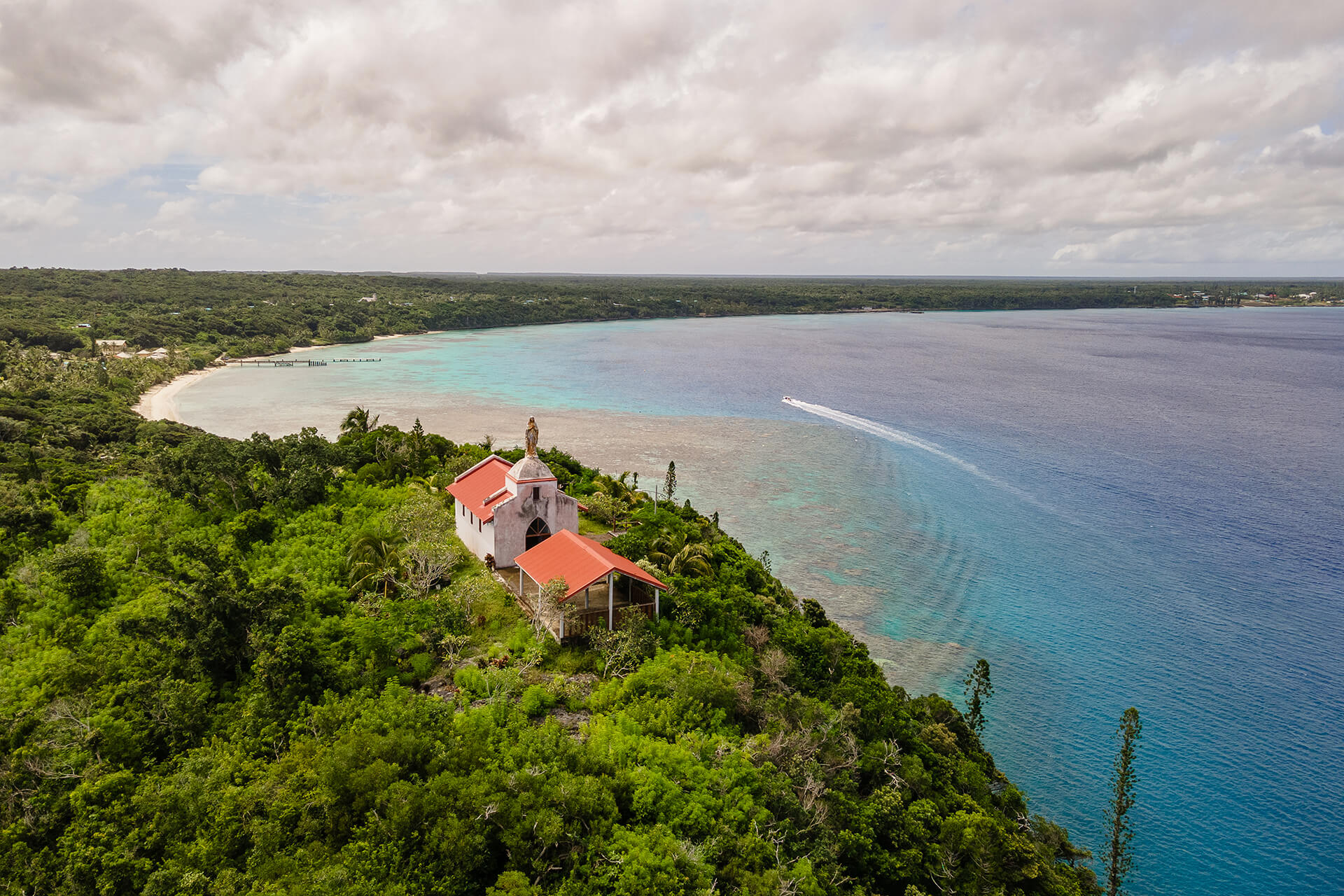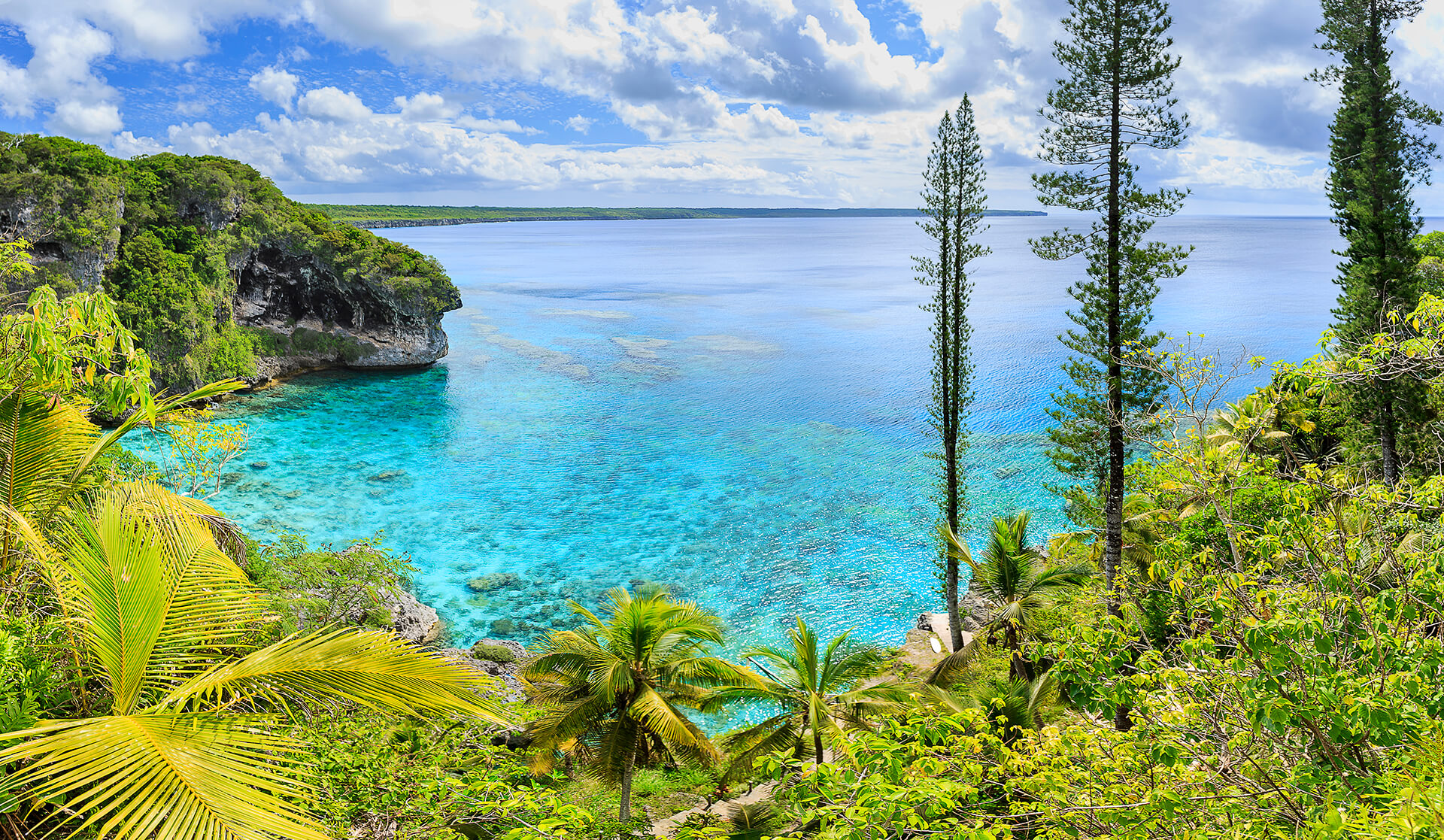 3511
3511 14 December 2022
14 December 2022 admin
admin
The Loyalty Islands flora
The Loyalty Island flora numbers more than 450 native species of flowering plants, conifers and ferns. They have managed to colonise the archipelago using the wind and sea currents, along with birds and roussettes, a type of fruit bat. About 20 species of flora are considered endemic to one or more islands. To these must be added about 50 species cultivated by the first inhabitants of the Loyalty Islands and several hundred useful food or ornamental plants introduced since the end of the 19th century.Endemic and traditional species
Given its size and the extent of its forests, Lifou appears richest in terms of flowers. But each island has plant formations that are remarkable in terms of their appearance, topography or specific richness. Like the coastal roads with cliffs planted with New Caledonian pines that can reach 60 m in height, or, as on Maré, the “bone holes”, areas of subsidence encountered in the forest ranges, which sometimes open onto the freshwater lens more than 50 m deep and are home to several species that have adapted to the cool and the damp, ferns in particular. Along the coast, the presence of mangrove swamps is astonishing, as they are unusual on coral islands. Note also the little Wabao marsh, in the south-west of Maré, which contains the only listed population of niaouli trees in the Loyalty Islands.
It seems that goblins, or spirits, have shaped the forest of the Loyalty Islands over the centuries. Overlooking dense undergrowth, the dense moist forest and evergreen forest on limestone are dominated by sprawling banyan trees (Moraceae), the rot-proof and solid kohu (Intsia bijuga), false sandalwood trees (Cryptocarya elliptica) or buni (Manilkara dissecta) with their tormented forms, as well as many other species such as, in Lifou, the pö, the golëp, the Haoca, Hmetewen or Trelewebeth (their names in the Drehu language).
Local common names often refer to several unrelated plant species. False sandalwood is a good example. This name of false sandalwood is most often used on the islands to designate Myoporum crassifolium whose very fragrant wood is occasionally used to falsify the real sandalwood, used in mixture. The other fake sandalwood, Cryptocarya (Lauraceae), exhales a fragrance reminiscent of coconut, lemongrass, and vanilla. Dotted with calcareous boulders and outcrops, the irregular soil is covered with ferns. The young shoots of one of them – the bird's nest asplenium (pahatr in Drehu) – have the particularity of being edible and are used in salads. They are harvested in the forest near the Mucaweng tribal village in Lifou.
Among the remarkable plants, several species stand out, for aesthetic, botanical or economic reasons. Sandalwood first of all. It grows in fallow fields for producing yams and other food and fruit crops, even if sandalwood plantations have been developed in recent years. Sandalwood has been exploited since the second half of the 19th century, as its heartwood contains an essential oil used in cosmetics and luxury perfumes.
The sole known population in the world of the Lifou palm (Cyphophoenix nucele) grows in Jozip. It is the only palm endemic to the Loyalty Islands and is prized for its ornamental qualities. Another endemic species, Cyrtandra mareensis is the only representative of the Cyrtandra genus in New Caledonia. Finally, another endemic shrub should not be forgotten: the mamadraï, with its clusters of scarlet flowers that brighten Loyalty Island gardens.
Various plant species are also known to be used as traditional remedies. The leaves of Cryptocarya elliptica (known as “false sandalwood” in French, but with no common name in English) are effective for destroying worms. Wild jasmine leaves purify the blood. Other leaves are used to treat sore throats or have digestive benefits. The buni, for its part, represents a totem plant also used traditionally, but for other properties: its wood is used to build the centrepost in the grande chefferie (high chieftaincy) hut.
How can we forget the coconut palm (Cocos nucifera), a plant with a thousand uses, which plays a leading role in Oceanian cultures? Nothing is lost in the coconut tree, from the nut used at all stages of its maturation (coconut water, grated coconut, milk, germ, coconut oil etc.) to the leaves which are used to make the roofs of the huts and many woven objects, but also the wood, or the edible palm heart.
Exquisite plants
On Lifou, the puifélö (Murraya crenulata) and hnyim (Alyxia stellata) are used to make huts fragrant or to adorn oneself with a pleasant scent. It is said that at the time when young girls rarely left their homes, their suitors would make floral crowns and position themselves not far from the hut, in the direction of the wind, so that the scent would encourage the beautiful recluses to come out and join them.
Sandalwood, Mare’s most precious tree
Sandalwood (Santalum austrocaledonicum) grows wild on the islands of Lifou and Maré. As early as the nineteenth century sandalwood traders established their bases in the Loyalty Islands. They then exchanged bottles, pipes, beads, iron, and fabric, but also weapons and alcohol for the precious wood. Some chose to settle there permanently to play the role of intermediaries with the merchants, but also to start a family. Overexploited, this tree nearly disappeared from the market. It has been reborn today thanks to the establishment of a sector around the Serei Nod Nengone processing plant in Takone on the island of Maré. Thanks to a process, as innovative as it is top-secret, developed with a perfumer from Grasse in France, the distillery produces an essence with exceptional qualities that has seduced some of the biggest names in perfumery (Chanel, Guerlain and Dior) and also cosmetics (Weleda).
Originally used for burning incense, sandalwood has become a rare commodity since the virtual disappearance in India, of the Santalum album, the best in the world. To avoid such a disaster, the Loyalties have opted for an exploitation respecting the rules of sustainable development. The cutting of trees is strictly regulated and is done according to quotas of mature specimens. Some 300 cutters - landowners from Maré and Lifou - supply the factory with "heartwood" and for each sandalwood tree uprooted, nine plants are replanted with the participation of the entire population. The export of raw sandalwood is also totally prohibited throughout New Caledonia.
